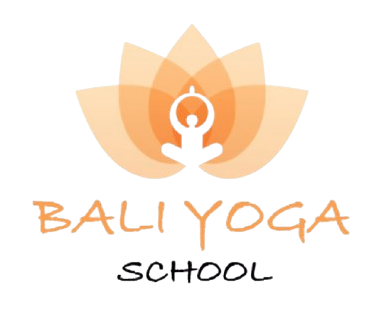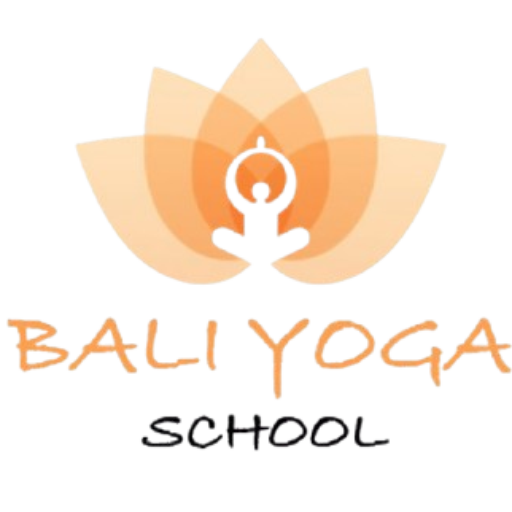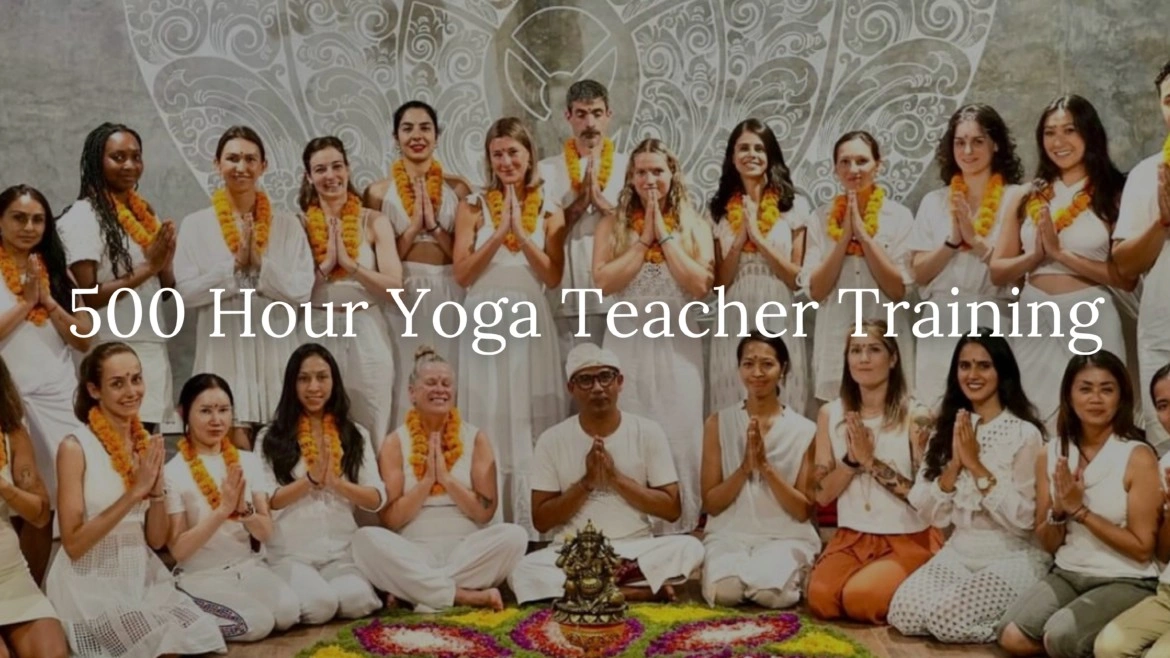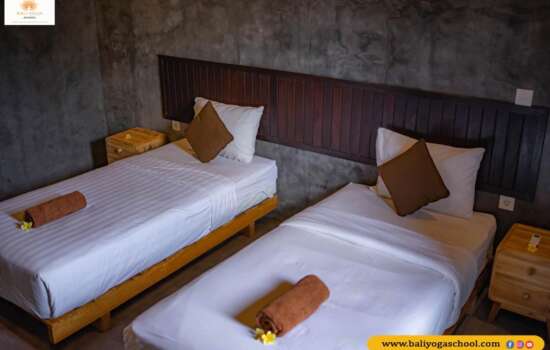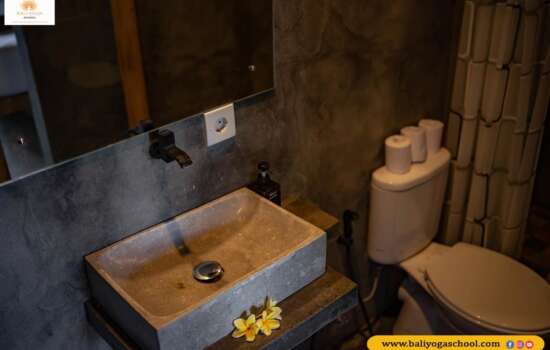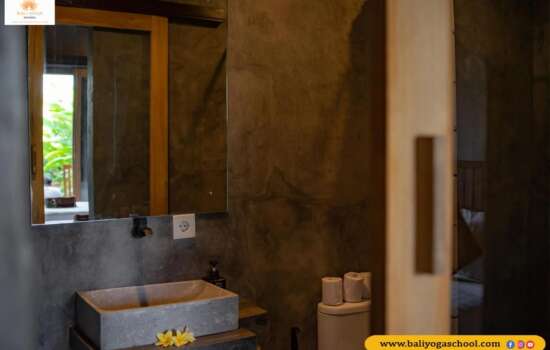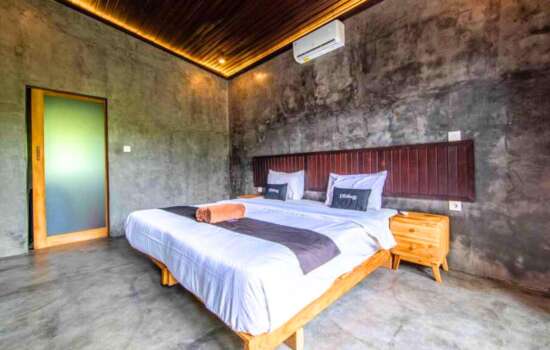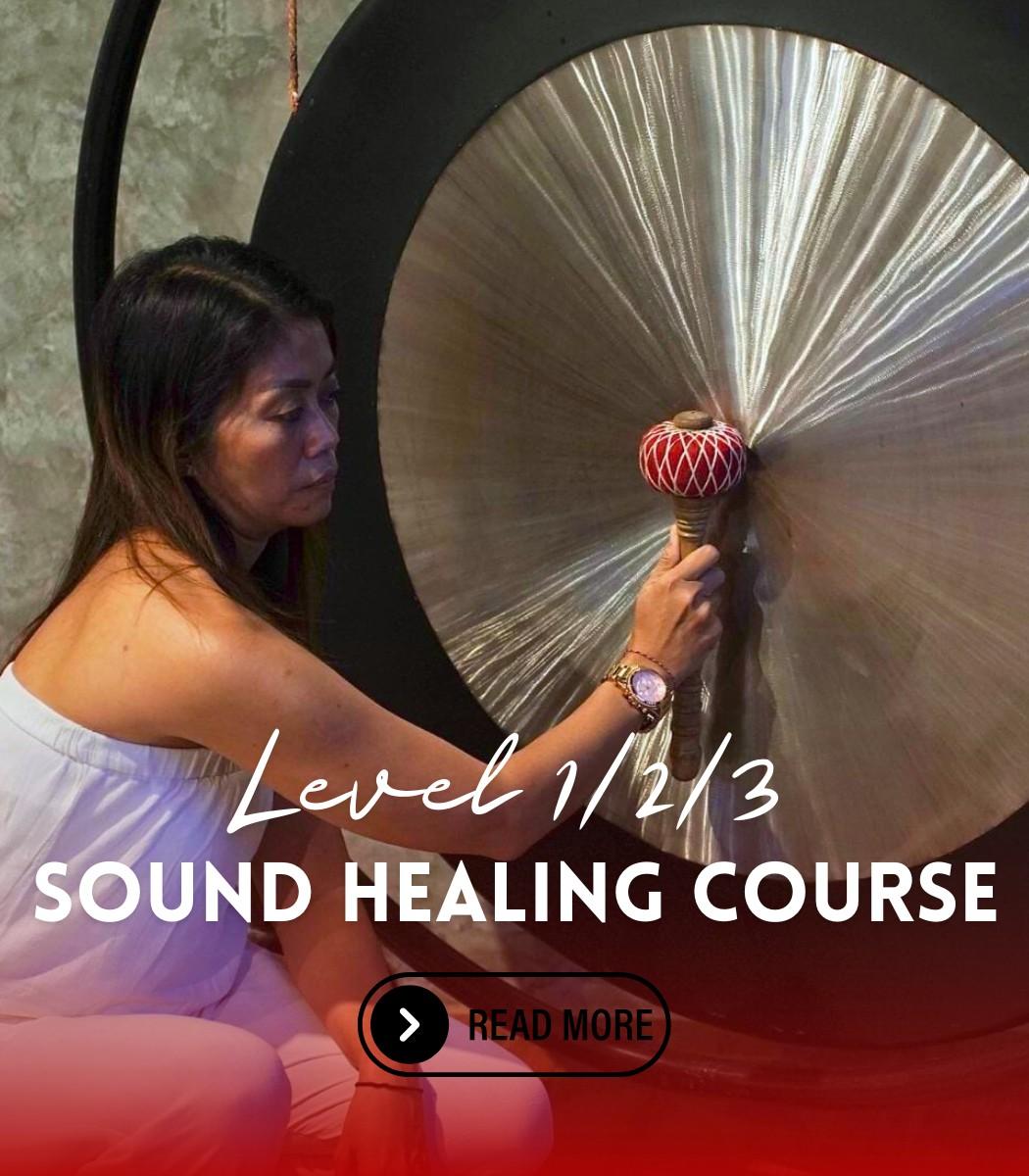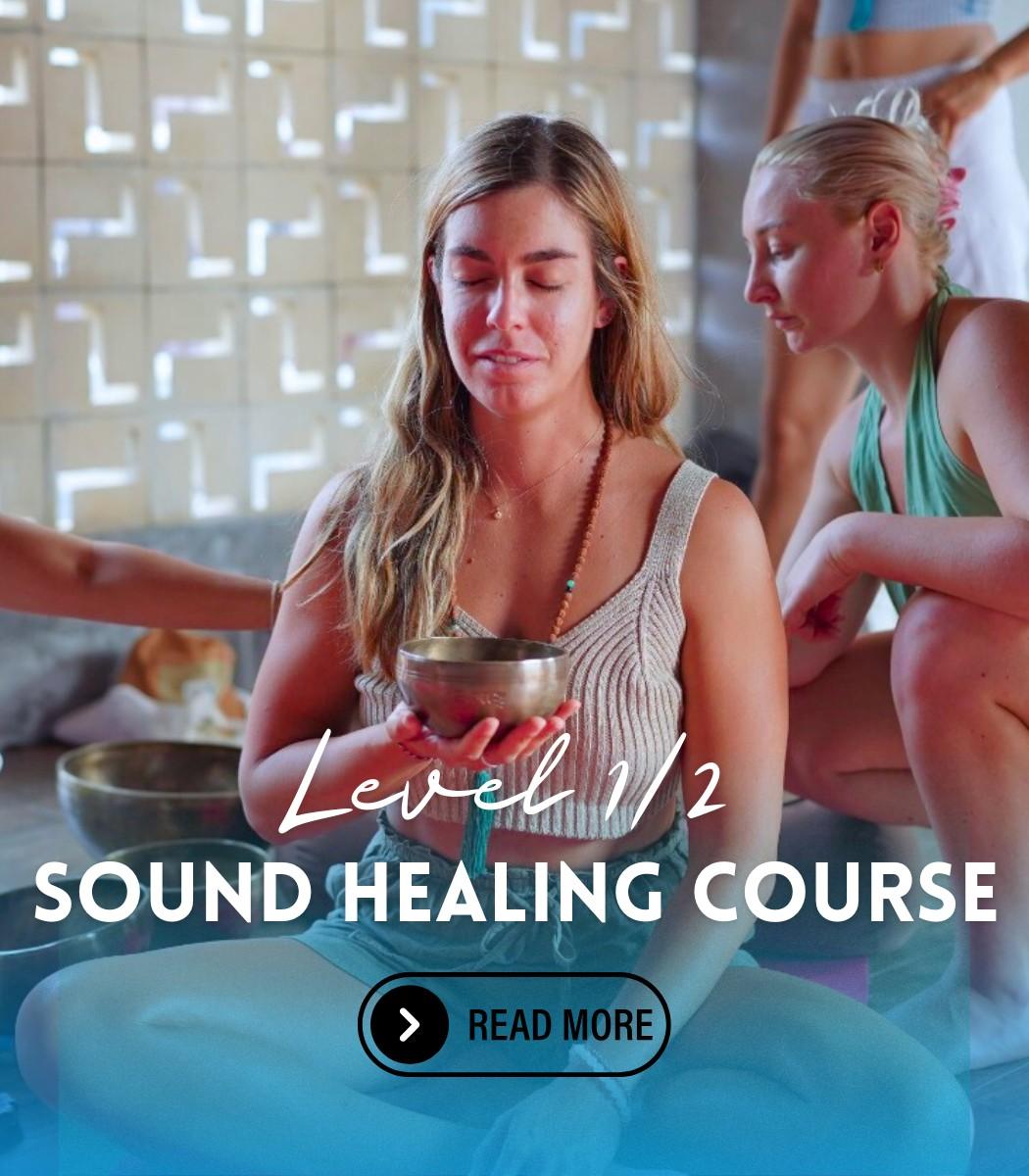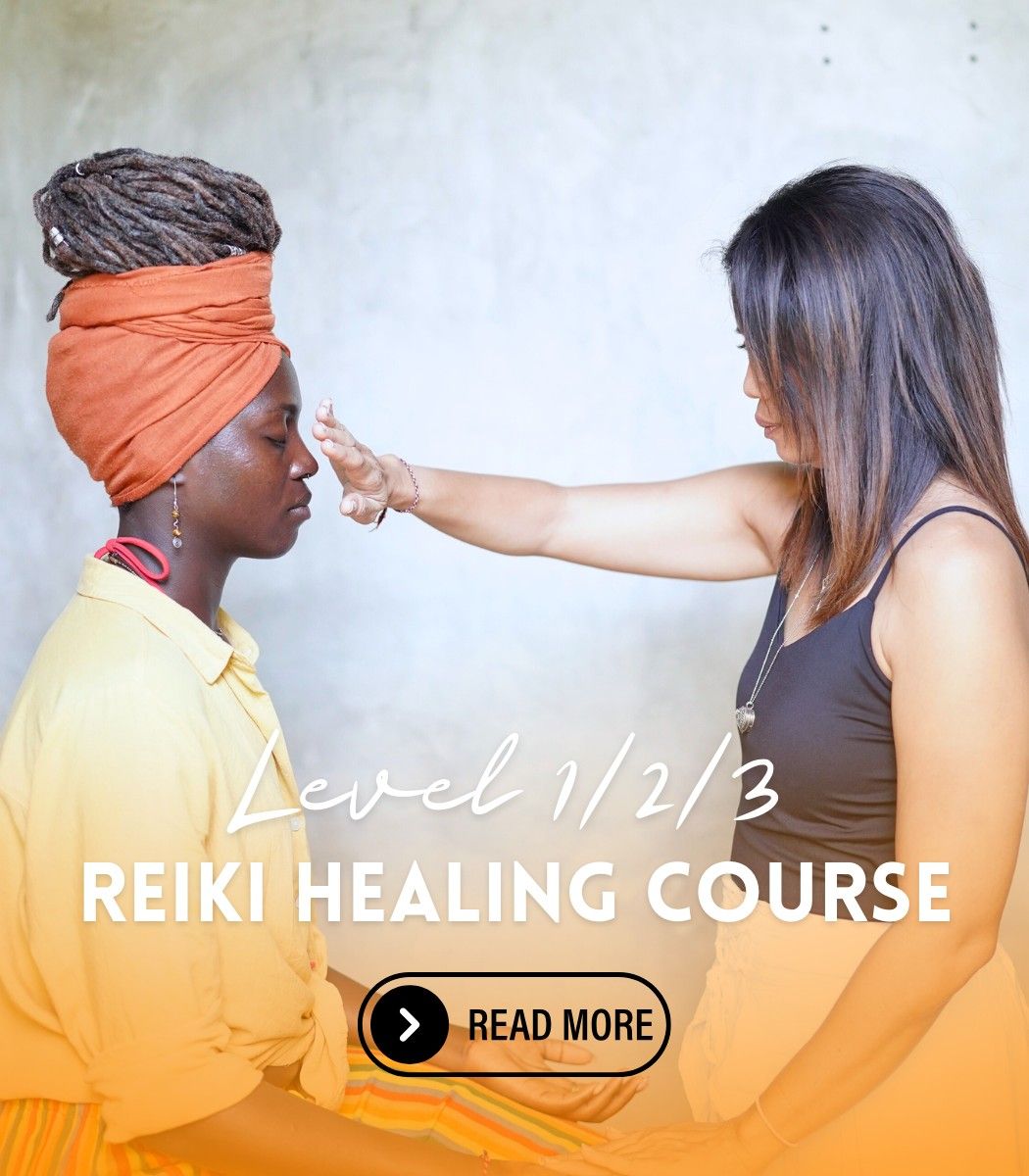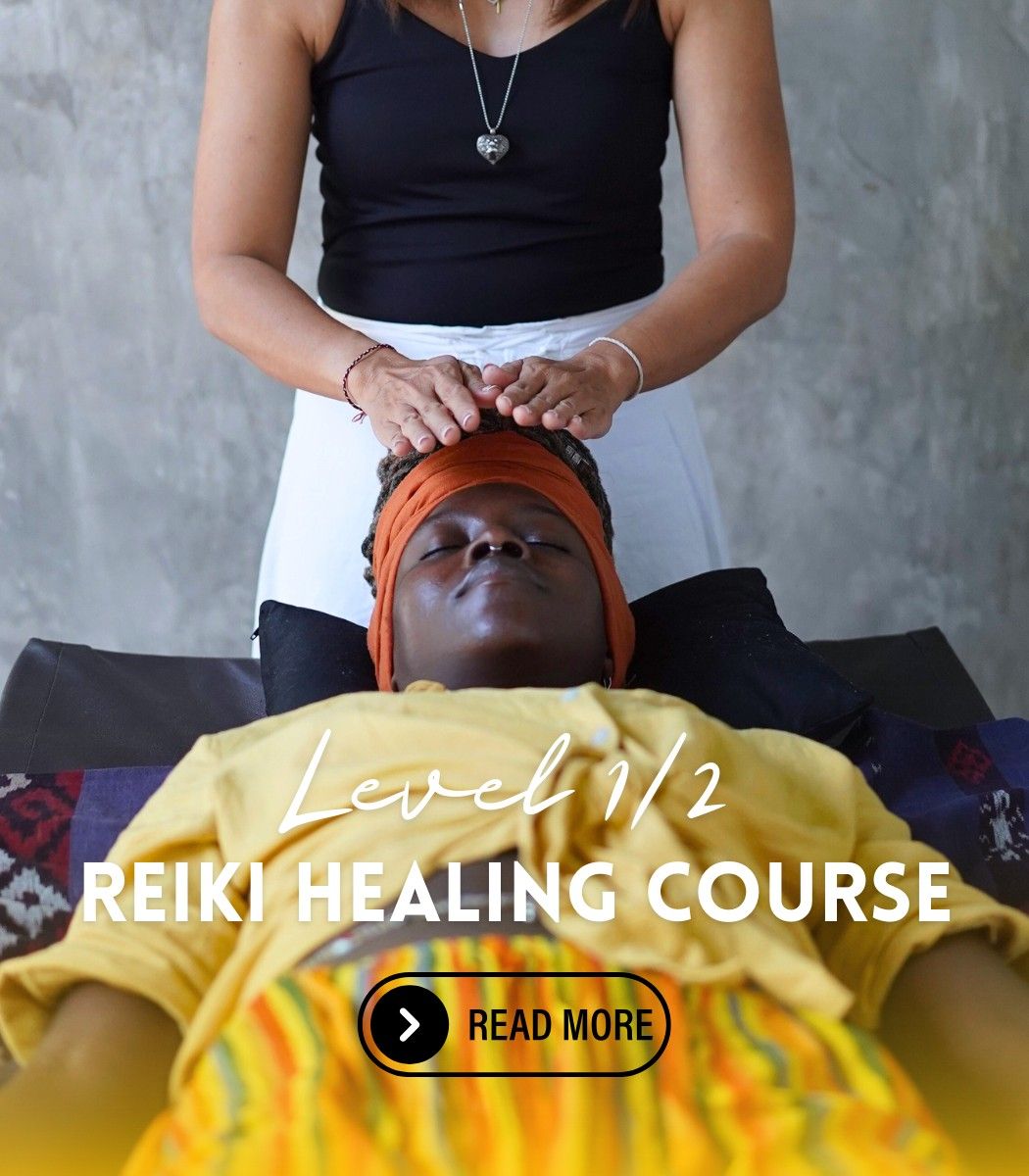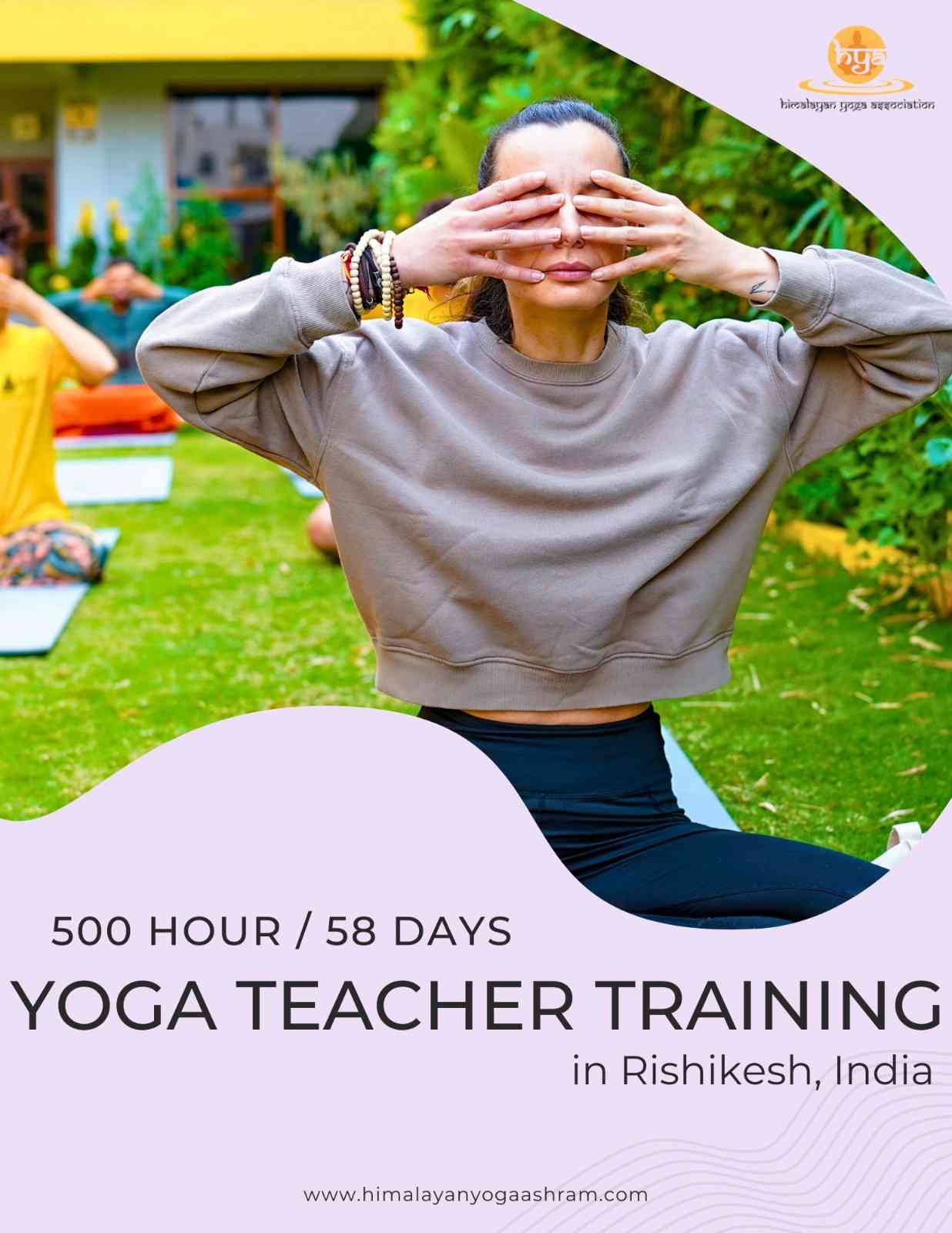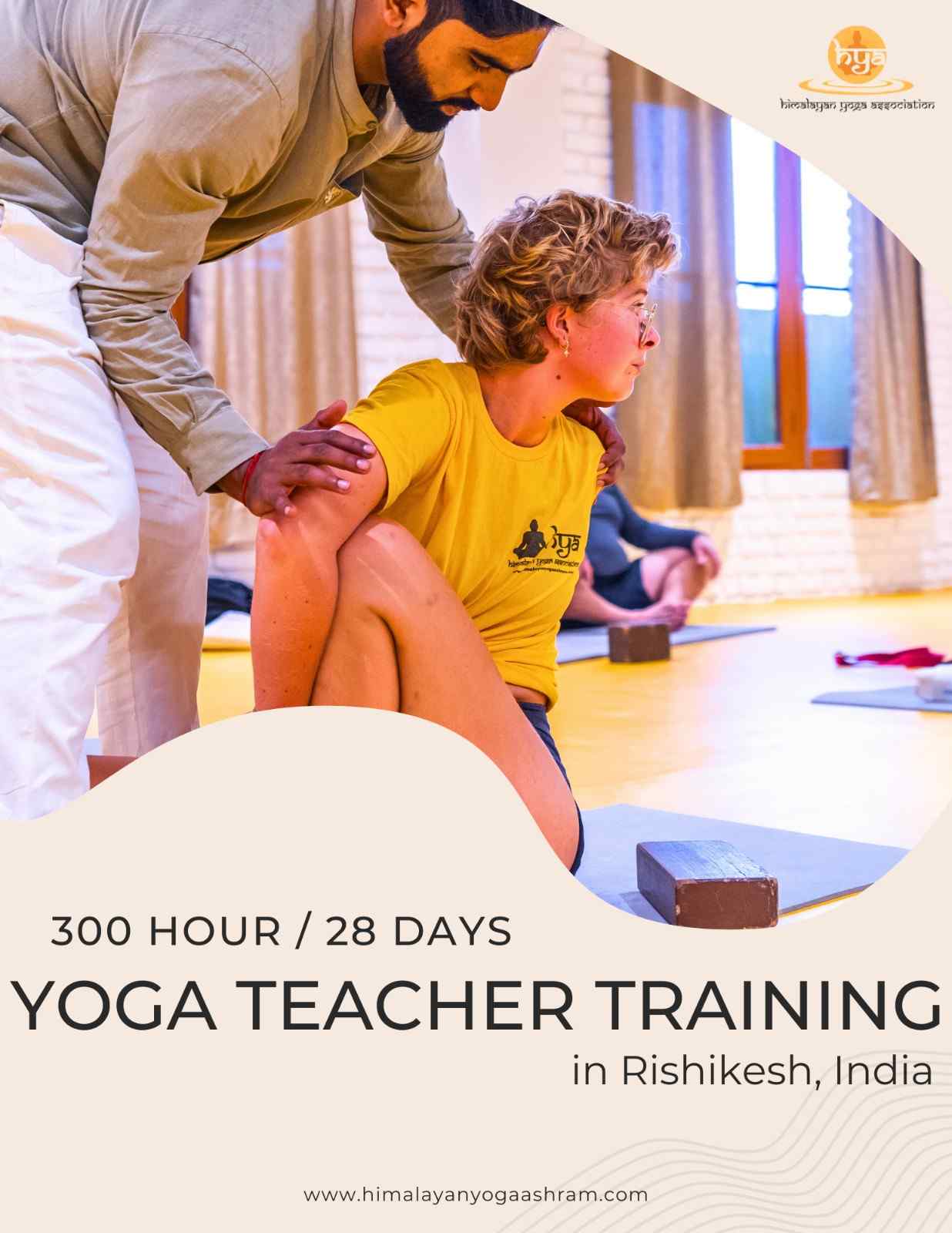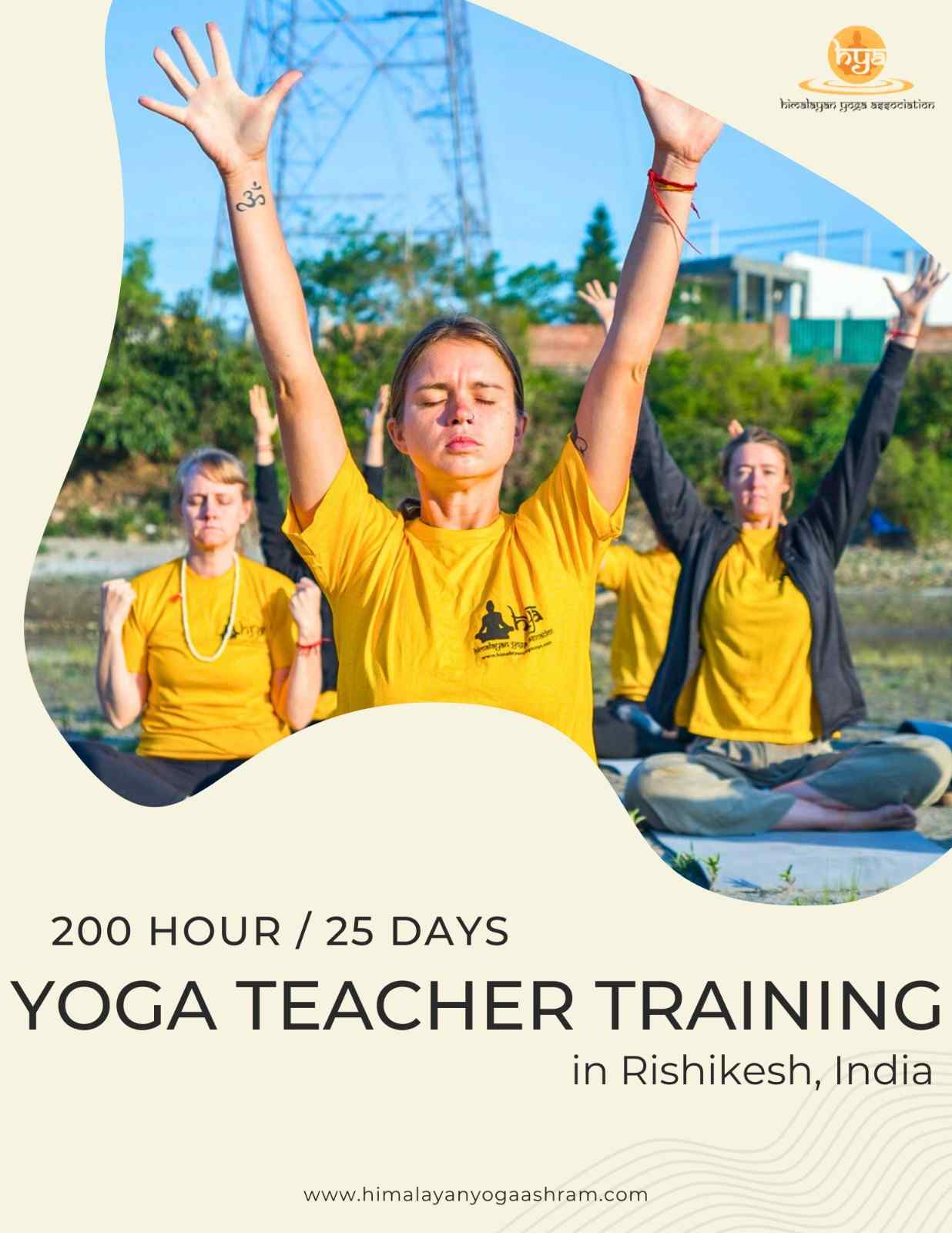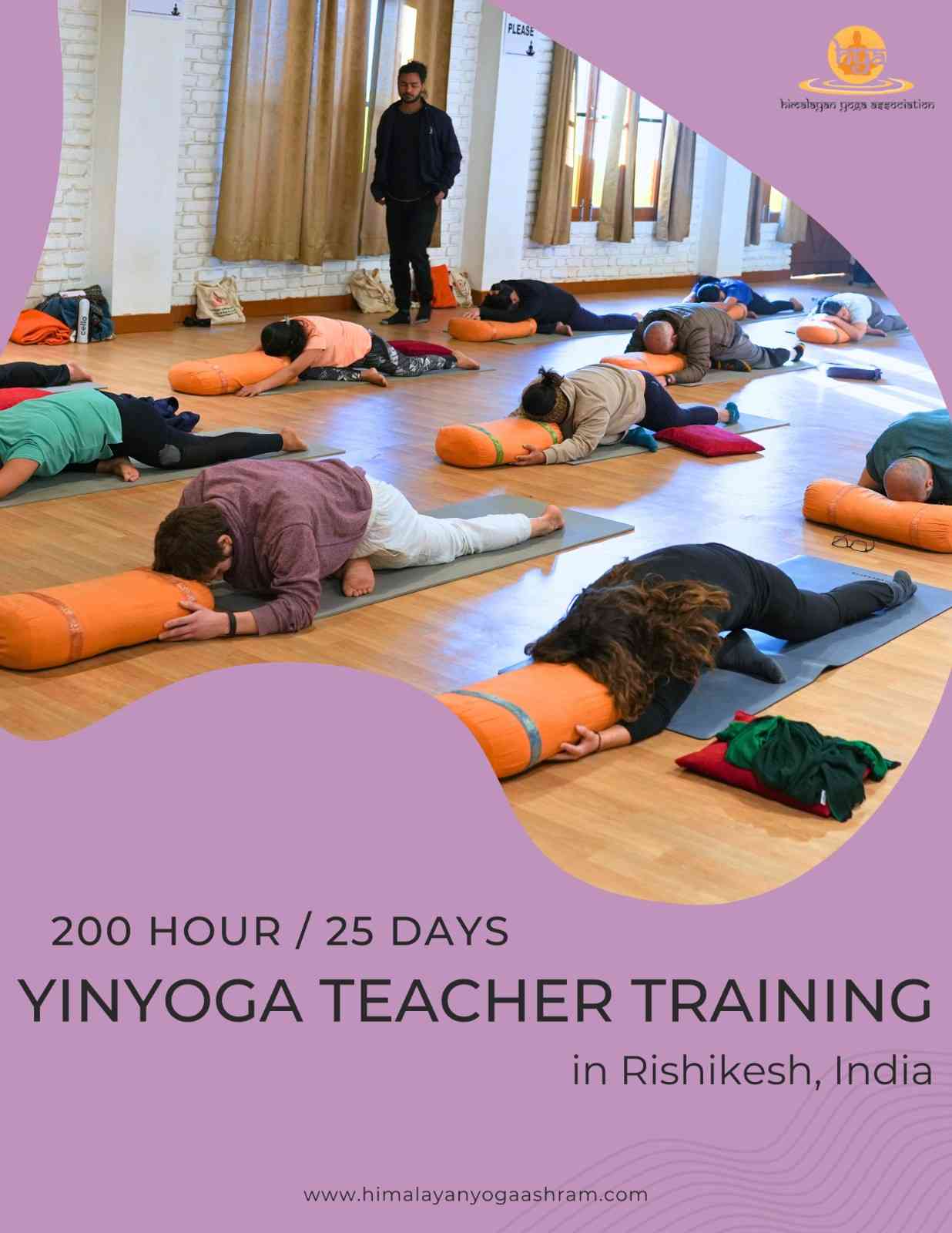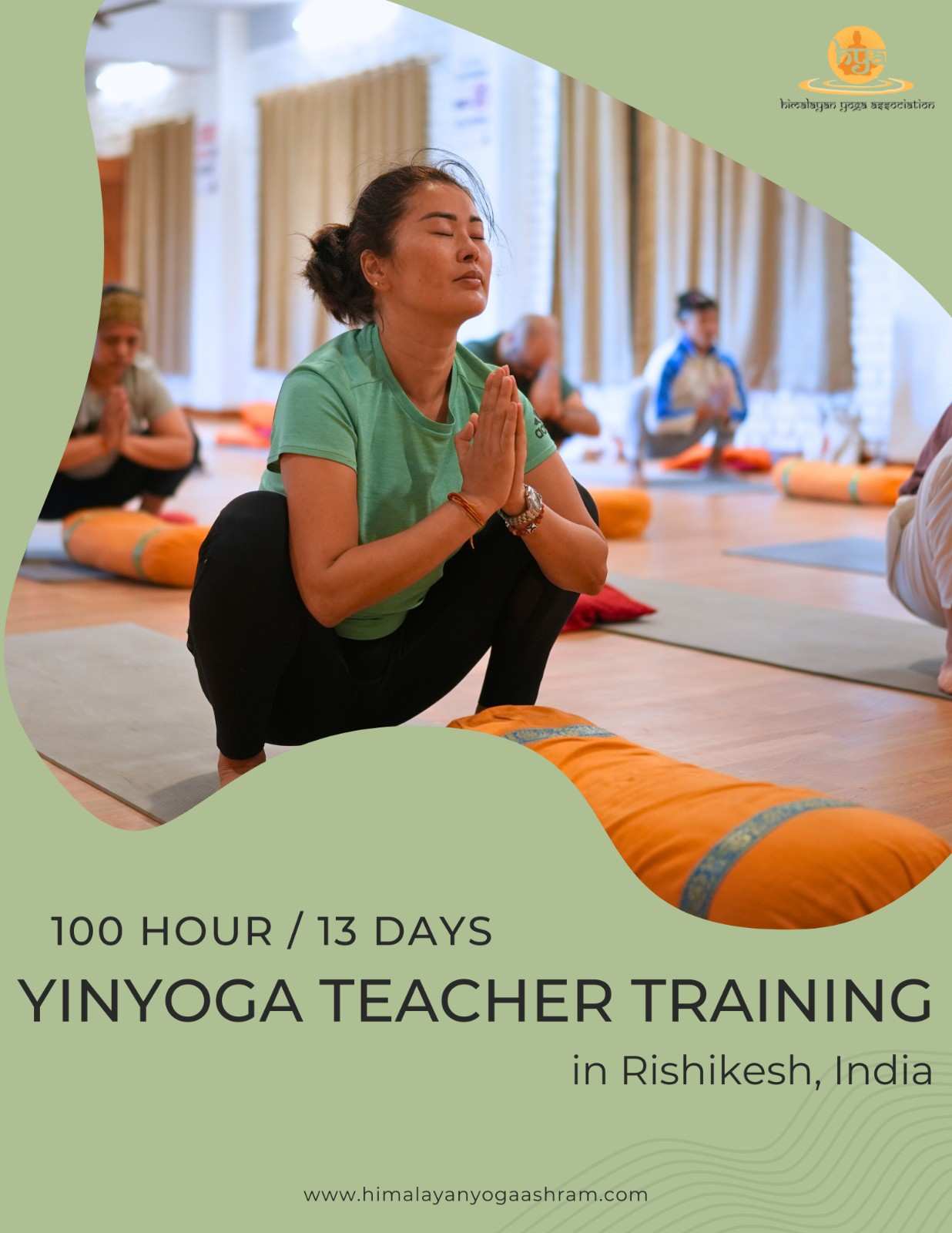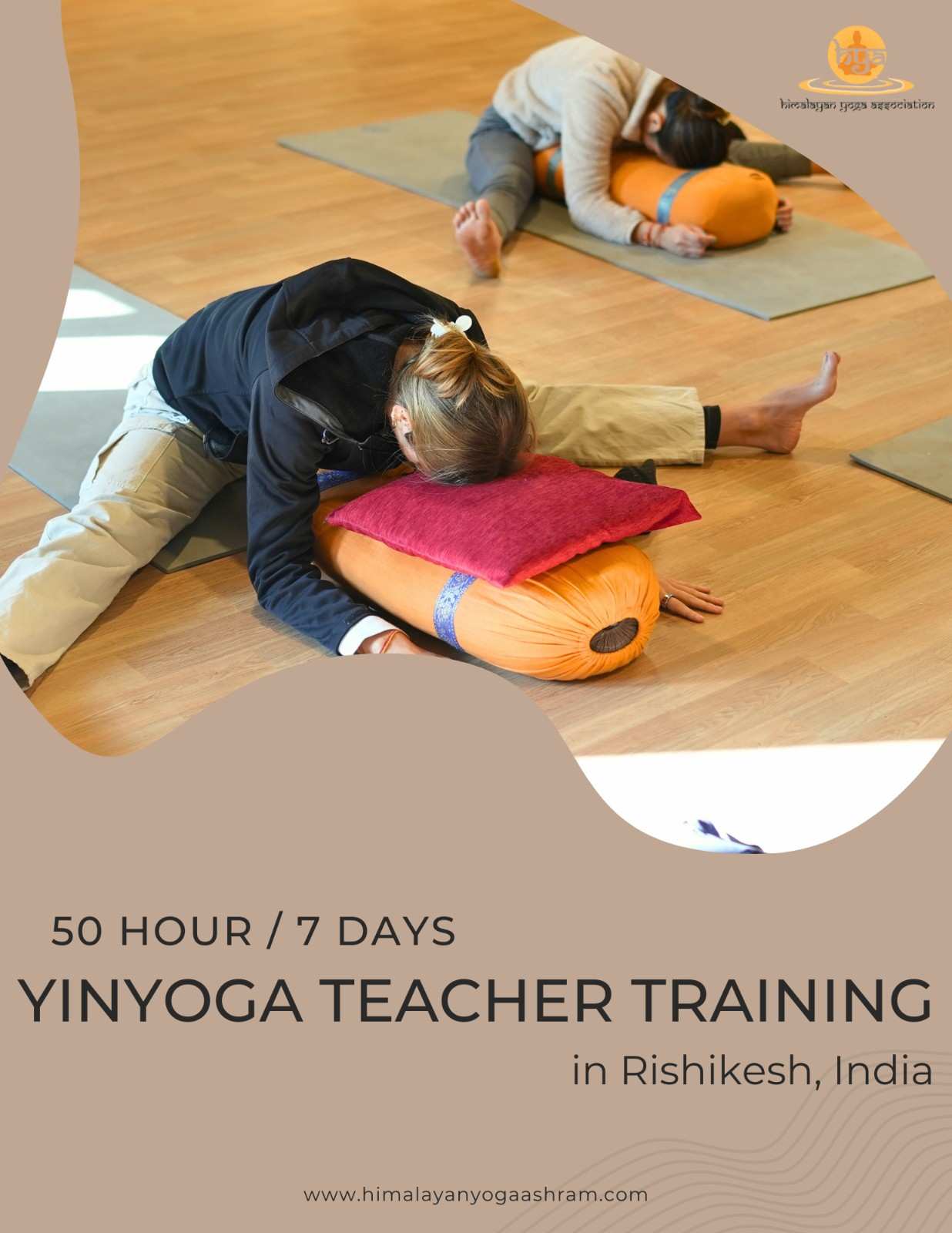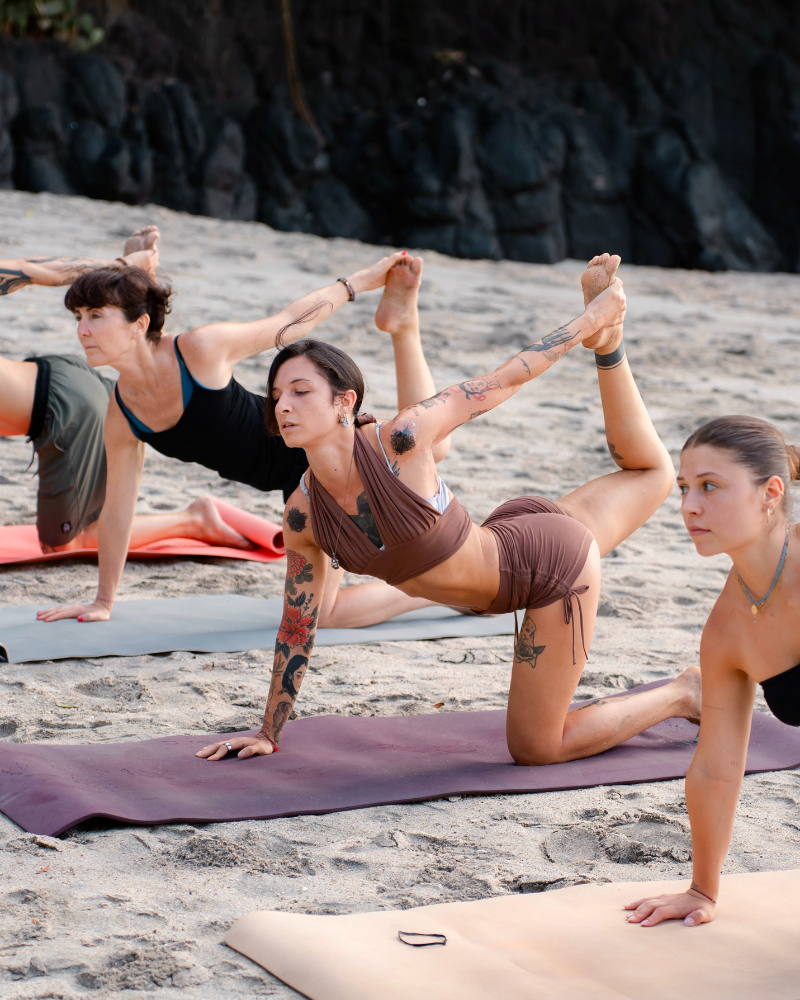Welcome to the transformative journey of our 500-Hour Yin Yoga Teacher Training, nestled on the serene cliffs of Uluwatu, Bali. Over 58 immersive days, you will delve into the profound stillness and wisdom of Yin Yoga, surrounded by the breathtaking beauty and spiritual essence of Bali. Connect deeply with like-minded practitioners as you explore the subtle layers of your being in our tranquil Uluwatu sanctuary. This comprehensive training goes beyond the surface, equipping you with mastery in Yin asanas, mindful adjustments, fascia release techniques, meridian theory, Taoist principles, deep pranayama, meditation, and the unique art of teaching Yin. Prepare for a profound physical, energetic, and spiritual expansion, emerging as a confident and knowledgeable Yin Yoga teacher.

Yoga teacher training course contains all the fundamental aspects to truly understand and be able to live a yogic life. Let us take you on the journey of personal and professional self-development. We ensure that the classes are taught in an authentic atmosphere. We make sure the environment offers you a dynamic, engaging and holistic experience. You can take our Reiki / Sound Healing Courses with a little extra cost, you can complete all the selected courses during your 500 hour yoga teacher training course as we arrange during your free time during the day! Check the pricing below this page.
One-hour workshop on ‘How to Run Yoga Business’ is included in this course.
This special workshop will be conducted in the 3rd week of the course.
Yogi Himanshu has been running multiple business related to Yoga and wellness in India, Indonesia, as well as successful online yoga courses. He has started contributing the yoga scene in Rishikesh even before Rishikesh began to get a spotlight. This workshop has been crafted to deliver essence of his success in yoga business to benefit our students of the yoga teacher training courses.
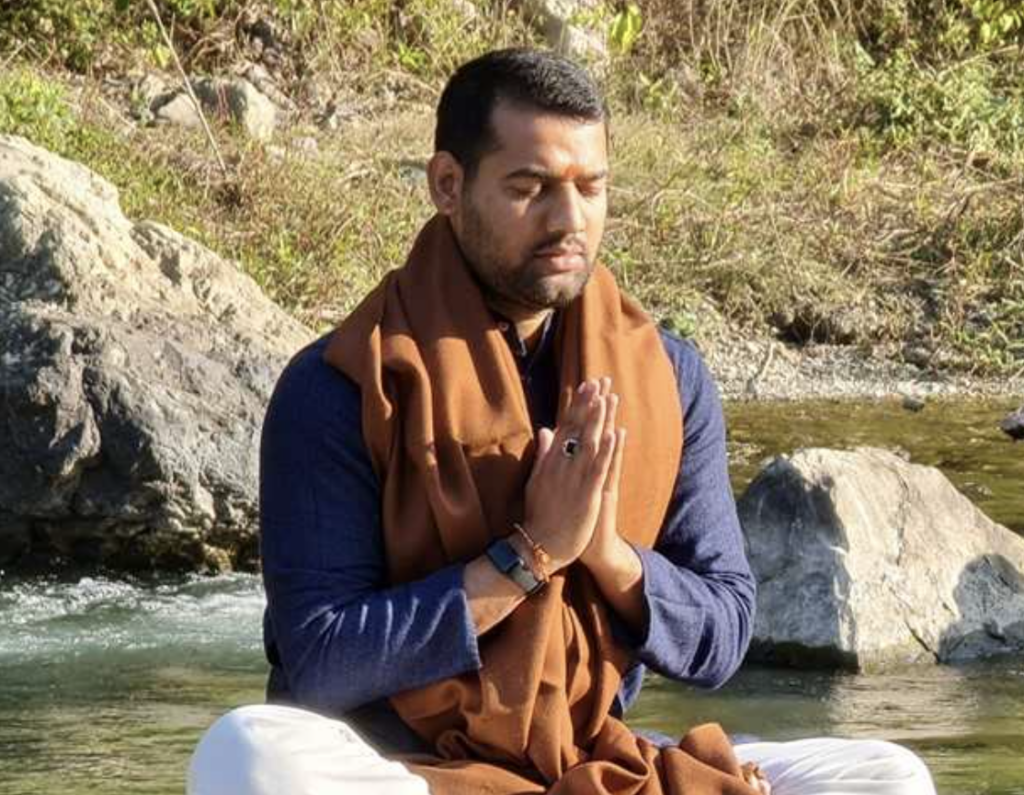
THE HISTORY OF YIN YOGA
Yin Yoga originated from China and is based on the principles of Yin and Yang as described by Taoism. This idea is rooted in Chinese philosophy, health, and religion as two opposing forces: Yin is associated with the idea of a calm, night, passivity, while Yang is associated with movement, day, and activity.
The types of yoga that are currently practiced include Vinyasa, Ashtanga, and power yoga all of which are dynamic, muscular and fast Yang in contrast to Yin Yoga which is slow, passive and meditative. It targets the fascial system which is made up of tendons, ligaments and fascia by holding the postures for 3-5 minutes or more to get to the body and psyche’s denser planes.
According to Traditional Chinese Medicine, the body is composed of twelve channels or meridians and is associated with organs, feelings, and sensation. Yin Yoga postures bring pressure and release on these meridians to regulate the energy and care for the body. Consequently, given that the practitioner is grounded to stillness and the present, Yin Yoga is the perfect antidote to the current Yang excess of contemporary culture.
BENEFITS OF YIN YOGA
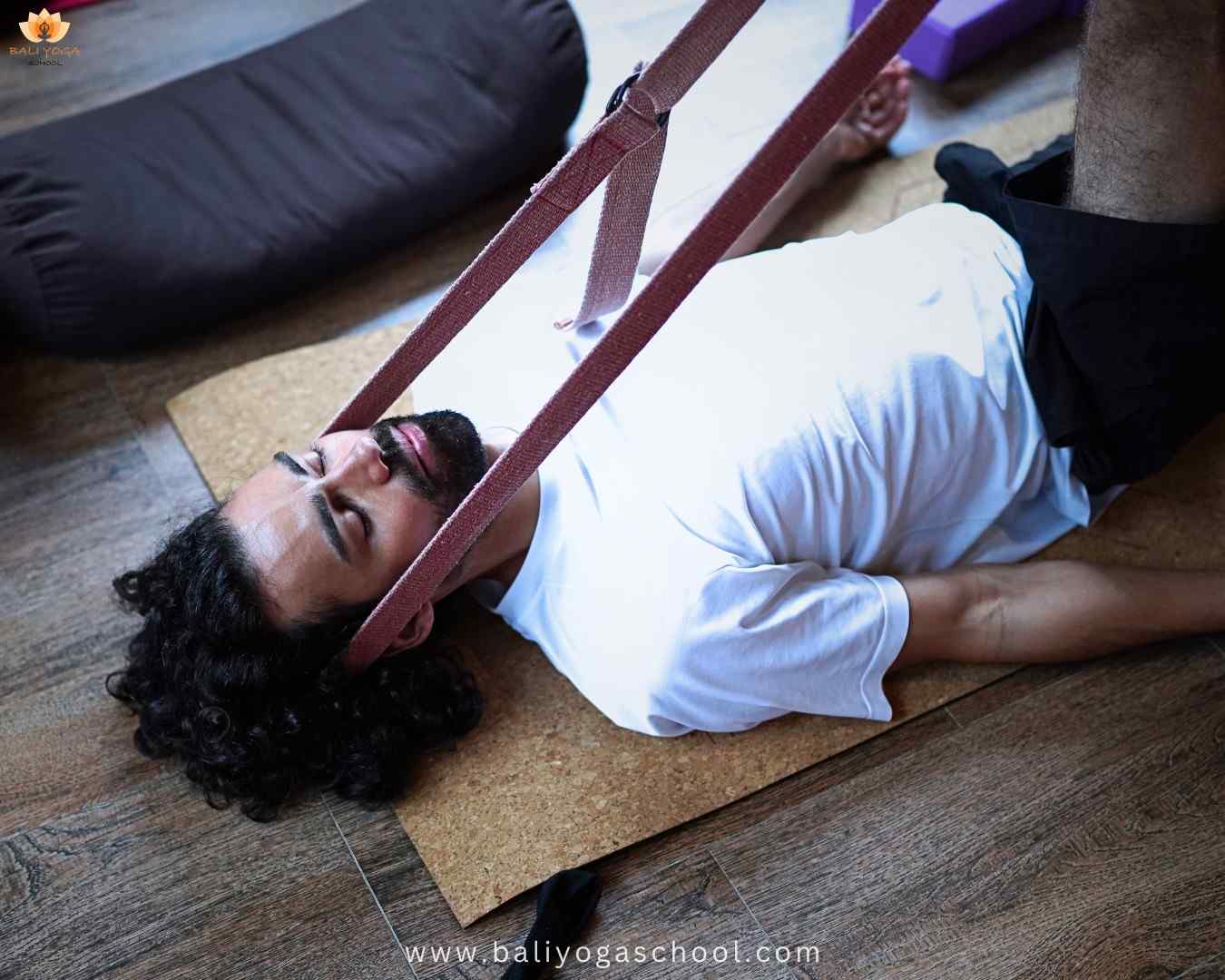
Improved Joint Flexibility: Inability to change the positions for long periods causes the connective tissues to become rigid and their hydration is affected.
Better Circulation: Stations also involve standing for a long time which is good for circulation of the muscles and even increases energy levels.
Stress Management & Emotional Release: We will use the parasympathetic nervous system to manage stress and anxiety and for the discharge of affective processes.
Mind-Body Connection: It fosters individual responsibility and individual management of life, which in turn strengthens a person.
Improved Sleep Quality: Yin Yoga is a slow, passive type of yoga that wakes muscles and helps the mind, so it can help people to sleep better.
Balanced Energy: Yin and Yang are two forms of energy that are mainly used to balance the normal operations of daily life.
500 HOUR YIN YOGA TEACHER TRAINING / YIN SYLLABUS
Yin Asanas + Yin Theory + Yin Alignment / Adjustment / Methodology
500 Hour Yoga Teacher Training In Bali Course Syllabus - 1st Month
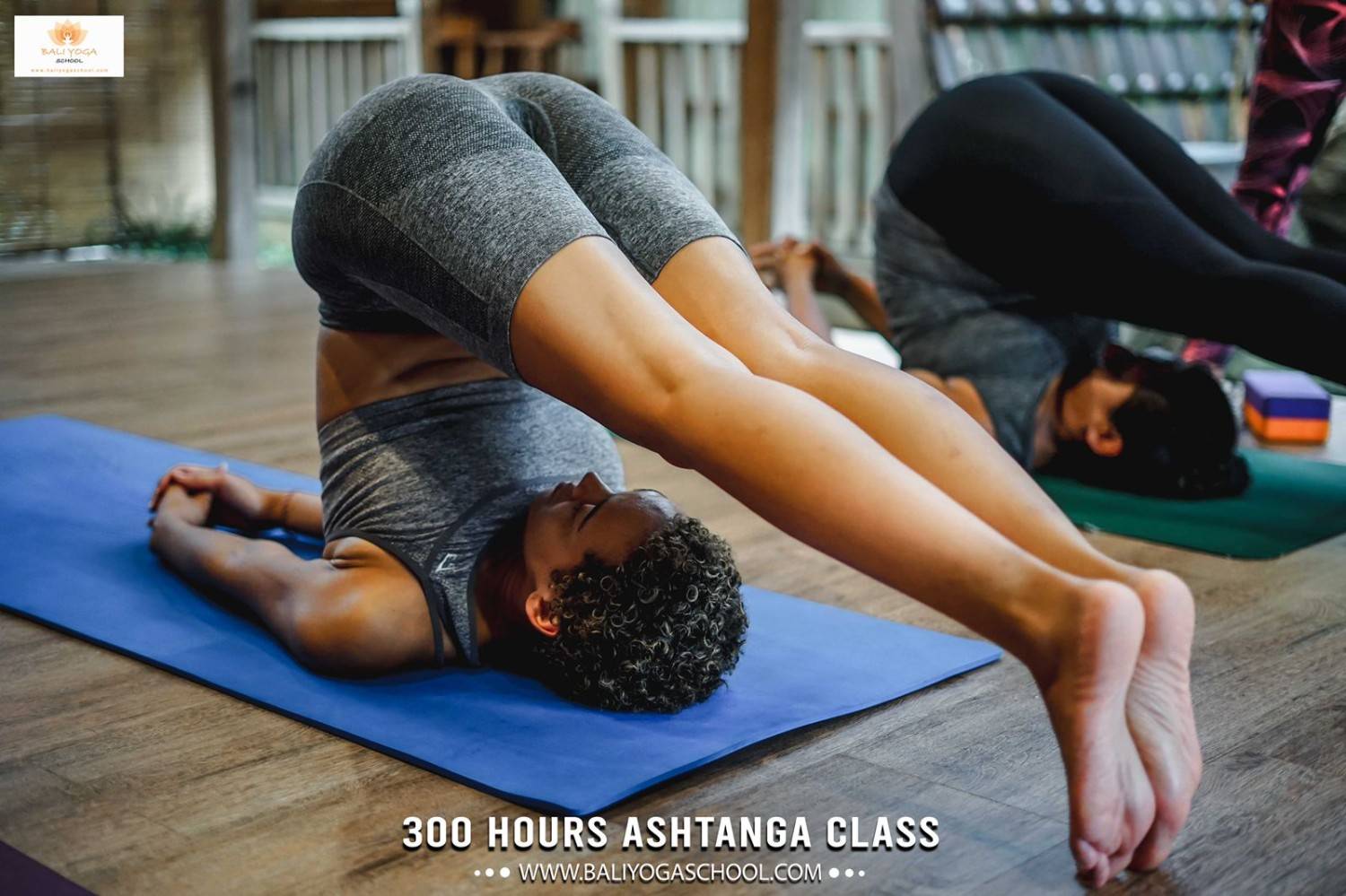
Ashtanga Yoga Postures
Ashtanga yoga primary series sequence made by K. pattabhi jois, In 200 hours yoga TTC we teach our students basics of Ashtanga yoga and we guide them through the completely Ashtanga yoga series in a systematically way according to the ashtanga yoga tradition which includes-
Sun salutation A
Sun salutation B
Standing sequence postures
Seated sequence postures
Finishing sequence postures
Mysore style/ use of yoga propas/ Teaching practice
On 1st week- introduction to Ashtanga yoga followed by Sun salutation A & B.
On 2nd week – Standing sequence postures & use of yoga props.
On 3rd week – Seated sequence postures & Finishing sequence postures.
On 4th week – Mysore style & Teaching practice.

Hatha Yoga/ Vinyasa Flow (Asanas) 1 st to 3rd week
Philosophy of Hatha Yoga
Ancient Scriptures of Hatha
Yoga Aim and Objectives of Hatha Yoga
Pavan Muktasana series 1
Pavanamuktasana series – 2
Pavanamuktasana series – 3
Centering postures series
Surya Namaskara
Chandra Namaskara
Padmasana Group of Asanas
Backward Bending Asanas
Forward Bending Asanas
Spinal Twisting Asanas
Inverted Asanas
Balancing Asanas
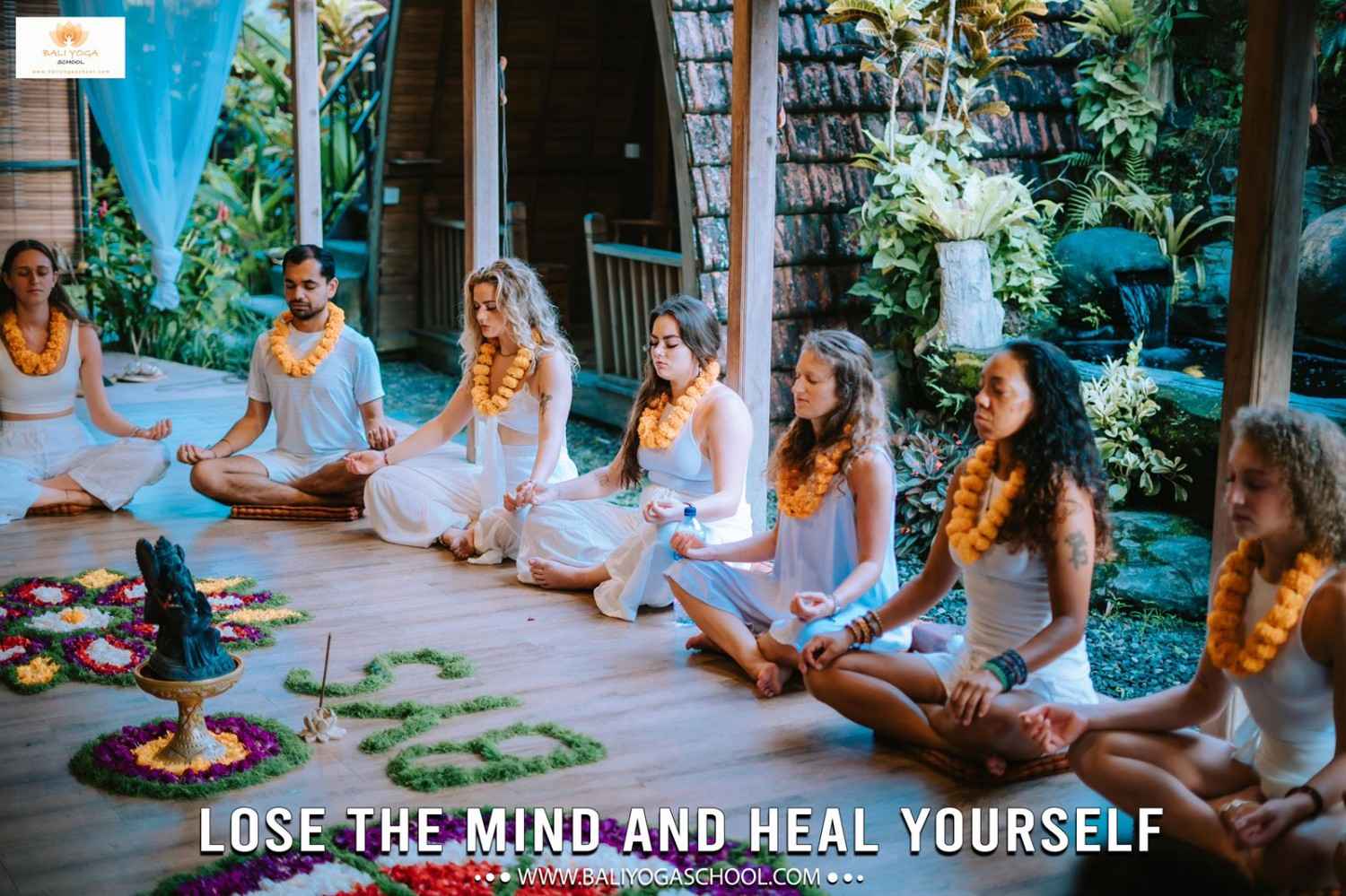
Meditation Practices
What is Meditation and what it is not
History of Meditation
Om Meditation
Shiva Mantra Meditation (Om Namah Shivaya)
Breath Awareness (Anapana)
Chakra meditation.
Sound Healing Meditation
Yoga Nidra
Nada Brahma Meditation
Dynamic Moving Meditation (Osho)
Kirtan Spiritual Dancing Meditation
Tratak Meditation
Body Awareness Meditation
Vipassana Meditation
Self Surrender Meditation
laughing meditation
Walking Meditation
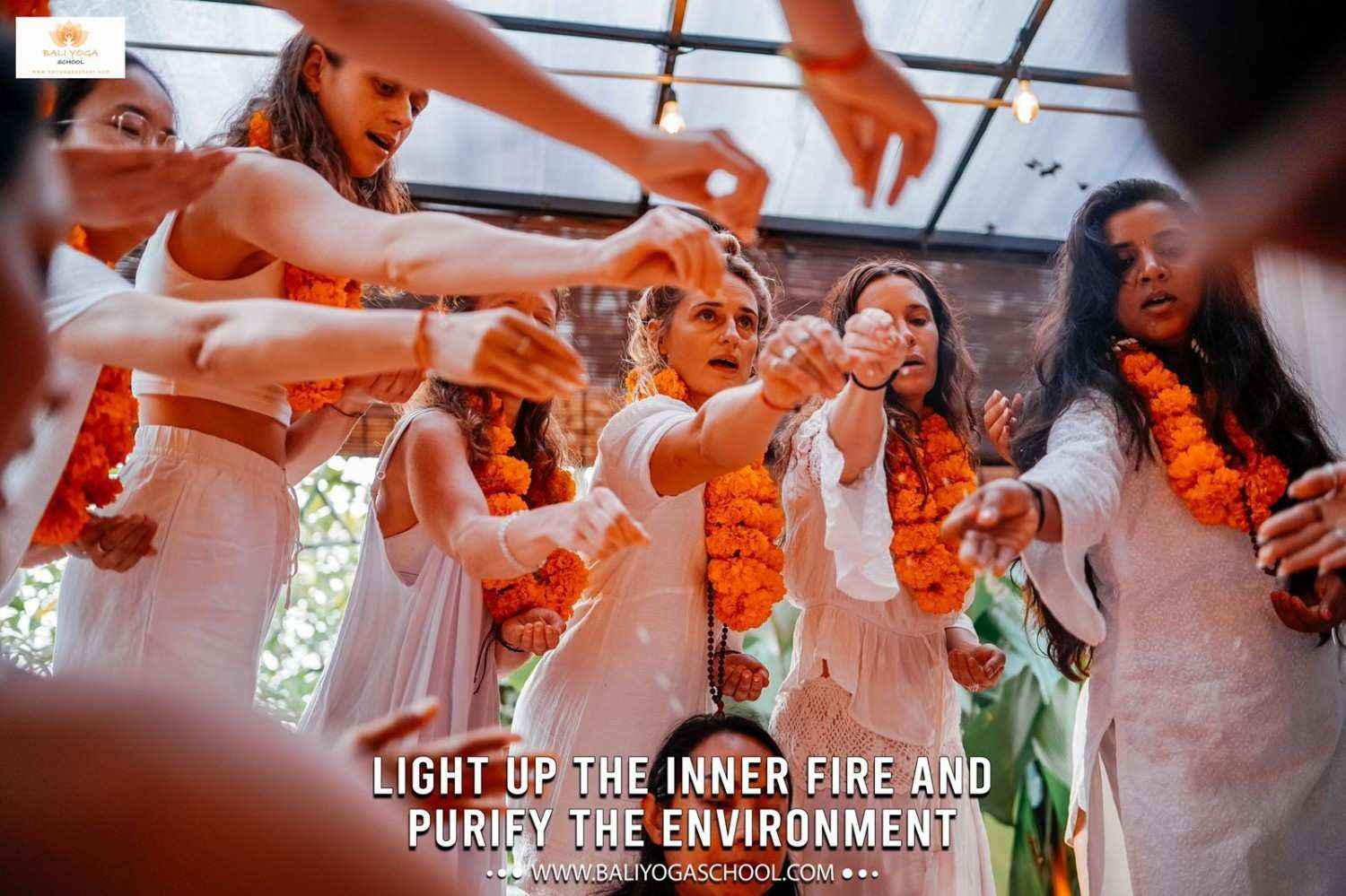
Yoga Philosophy (Yoga Darshana)
- What is Yoga, Meaning, and Goal?
- Three Kinds of Pain (Three-Fold Misery)
- History of Yoga
- Patanjali Yoga Sutras
- An Overview of Patanjali Yoga Sutras’ All Chapters
- Eight Limbs of Yoga
- Understanding All the 4 Paths of Yoga
- Karma Yoga
- Bhakti Yoga
- Gyan Yoga
- Dhyana Yoga
- Teaching of The Buddha
- Trigunas (Concept of Sattva, Rajas, and Tamas)
- What is Bhagavad Geeta & Upanishad
- What is Kundalini Yoga
- What are the Pancha-Kosha In Yoga
- What are the Chakras in Yoga
- The Nadi in Yoga
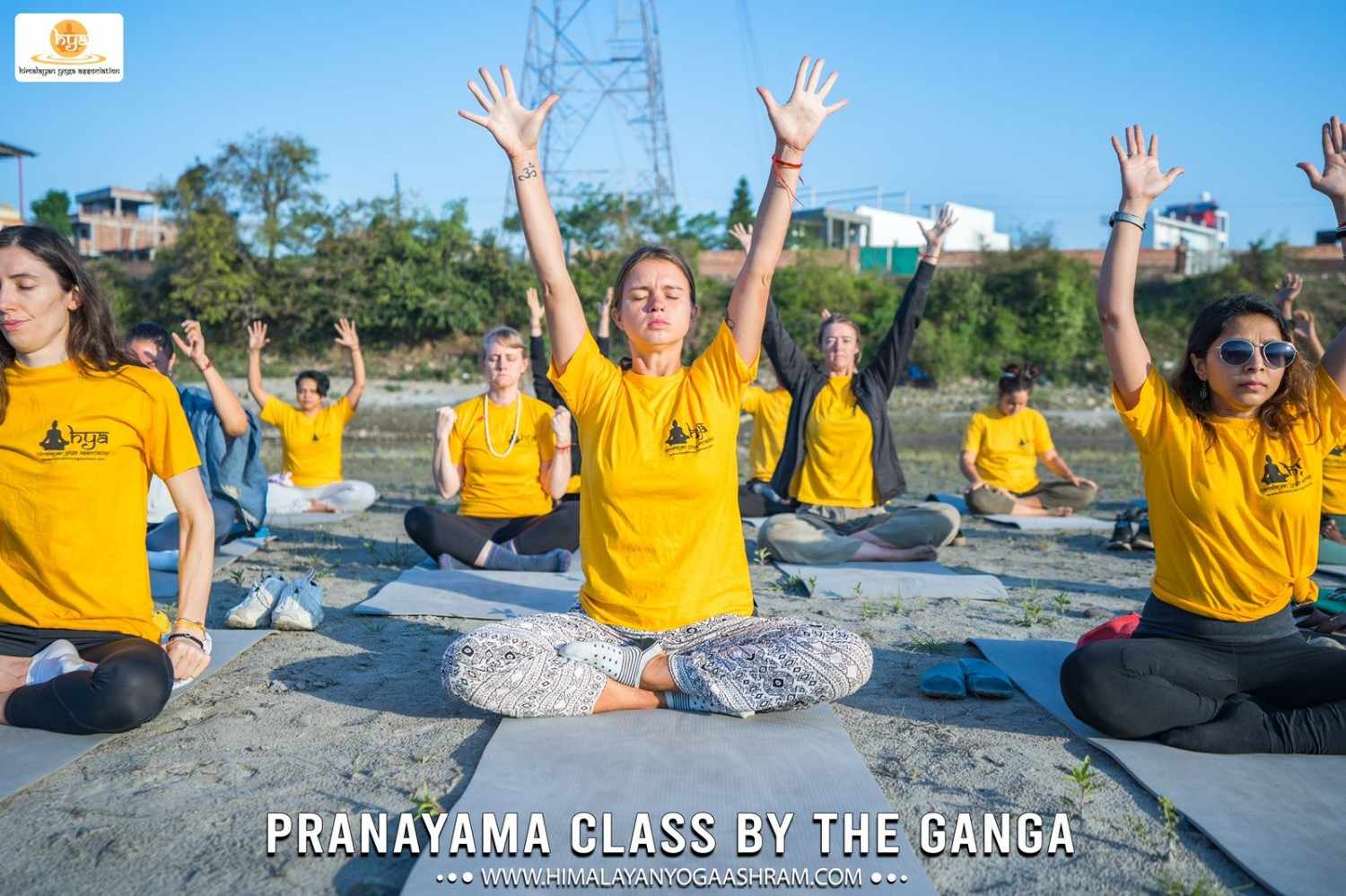
Pranayama (Breathing Practices)
What is pranayama & It’s Benefits
3 Best Postures For Pranayama
( Quarter Lotus/ Half Lotus/ Full Lotus)
Clavicular Pranayama
Thoracic Pranayama
Diaphragmatic Pranayama
Yogic Pranayama
Nadisodhanam Pranayama
Bhastrika Pranayama
Kapalbhati Pranayama
Bhramari Pranayama
Ujjayi Pranayama
Sitali Pranayama
Sitkari Pranayama
Ashta Kumbhaka
Anulom Vilom
Surya Bhedi,
Chandra Bhedi,
Sheetkari
Antar and Bahir Kumbakh
Pranava Pranayama
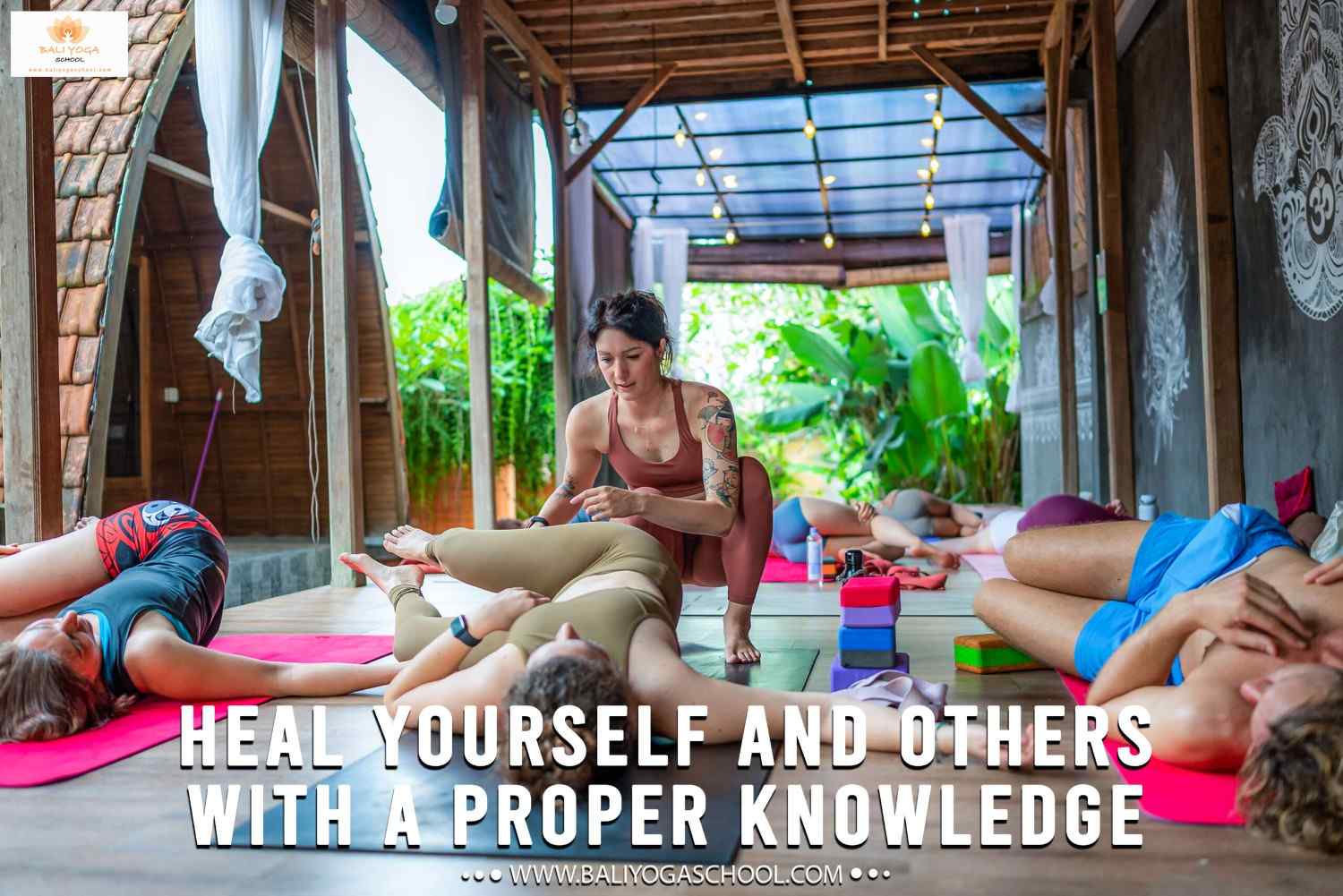
Alignment & Adjustment – In this class we will go through each asana or posture alignment & adjustment teaching
What is alignment and why it is important
Standing Postures
seated Postures
backward extension Postures
forward extension Postures
twisting Postures
inverted postures
How to perform the posture
Correct Alignment
Common mistakes and Precautions
Contraindication
Benefits :
Modifications
Verbal adjustments
Hands on adjustments
What is the sense of yoga adjustment
What is the level of yoga adjustment
Why adjustment is needed in yoga asana
Role of adjustments in yoga asana class
How to adjust others during the class
Pre required methods of adjustment
Uses of different tools and props to achieve a peak of the posture

Yoga Anatomy & Physiology
Introduction to Body and Its Structure
Body Planes
Bones of the Skull
Cervical Vertebrae
Shoulder Girdle/ Arm Bones/ Pelvic Region
Food & Digestive System
Deformities of the Spine
Lower Extremity
Tendons and Ligaments
Kati Basti or lower back pain treatment Practice
Lifestyle According to the Ayurveda
Muscular System
Nervous System
Respiratory System
Human Cells, Types of Tissues, Organs
Important names of human skeleton system
Angular movements of human body
Directional terms of anatomy
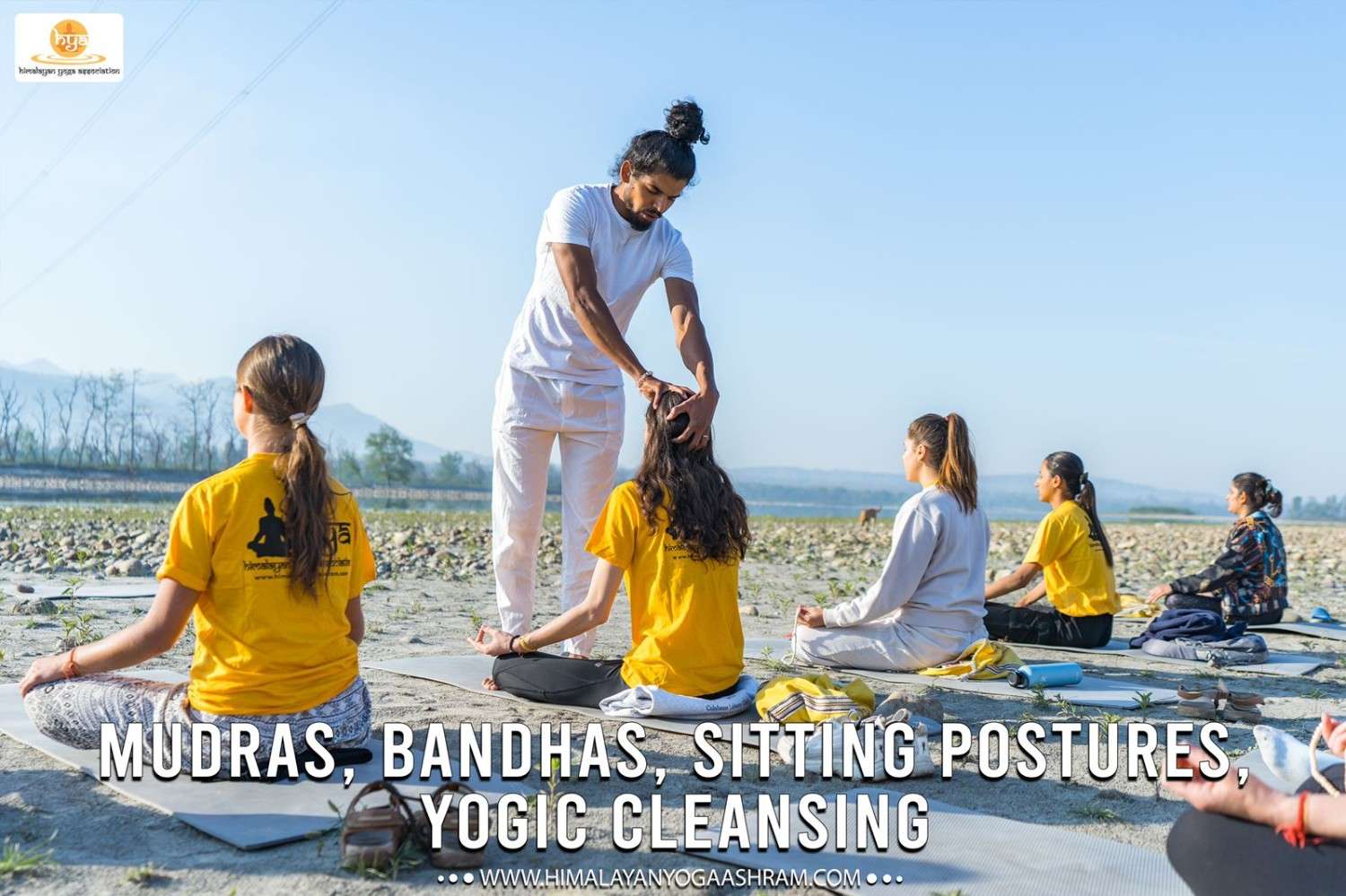
Mudras (Yoga Gestures)
Jnana mudra
Chin mudra
Bhairava mudra
Nasikagra
Yoga Bandhas (Energy Lock)
Preparation
Uddiyana
Jalandhar
Mula & Maha Bandha
Yoga Cleansing (Shatkarma)
Rubber-neti
Jalaneti
Sitting postures for pranayama sadhana
Easy pose
Half-lotus
Swastikasana
siddha yoni asana
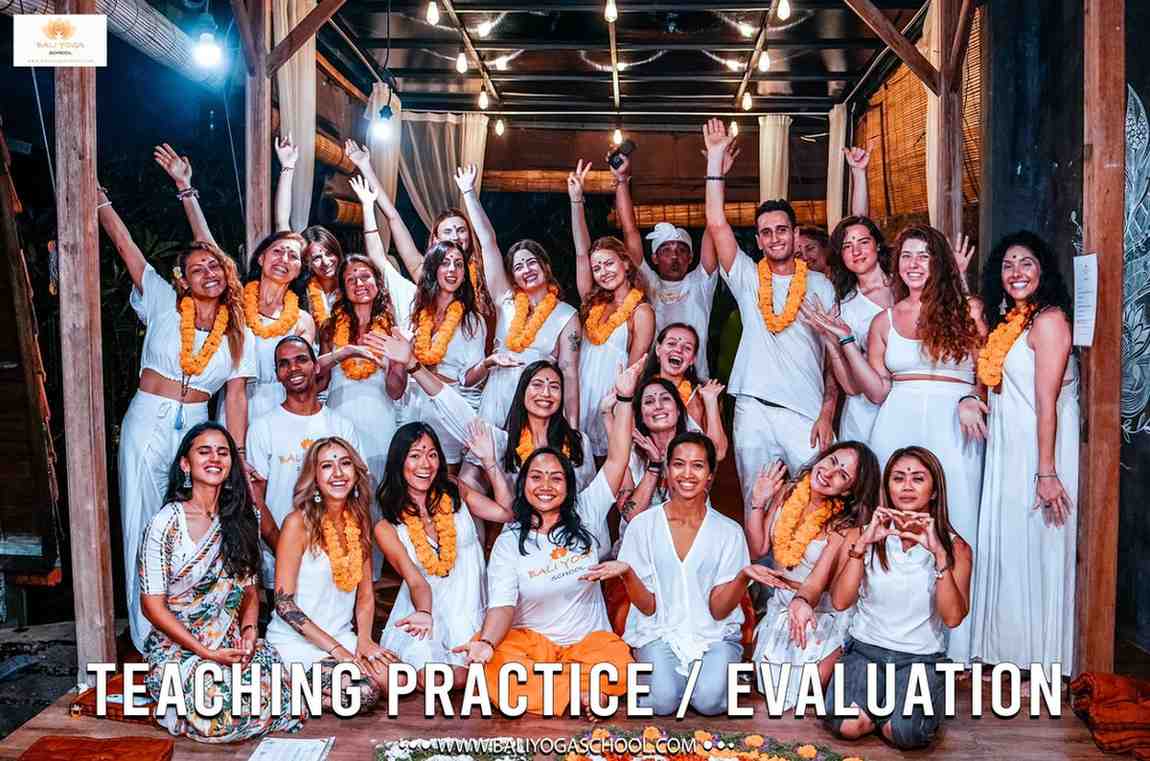
Teaching Practice & Methodology
Demonstration
Instructions
Alignment
Adjustment
Evaluation are based on
Written Test
Asana Practical Test
Attendance
Performance
Behaviour
500 Hour Yoga Teacher Training In Bali Course Syllabus - 2nd Month

Mastering Hatha / Vinyasa Flow
1st Week
Introduction of Hatha & Vinyasa flow
Pawanmuktasana series A
Surya namaskar (Hatha)
Chandra namaskar (Hatha)
Trikonasana
Parsvokonasana
Privarta Trikonasana
Privarta Parsvokanasana
Virbhadrasana A,B,C
Ardha chandrasana
Chaturangadandasana
Mathchendrasana A,B,C
Adra Ustrasana
Salabhasana
Setabandasana
Gatyatmak Paschimottasana
Pada prasar Paschimottasana
Saithalyasana
Sarvangasana
Core exercises
2nd Week
Surya namaskar A,B (ashtanga)
Chandra namaskar (Hatha)
Standing
Veerbhadrasana A,B,C
Trikonasana
Parsvottanasana
Parsvokonasana
Privirta Trikonasana
Privirta Parsvokonasana
Ardha chandrasana
Utthita hasta padangusthasana
Natrajasana
Vriksasana
Garudasana
Eka pada uttanasana
Natavarasana
Tandavasana
Eka padasana
Vatayanasana
Pada angushtasana
Baka dhyanasana
Eka pada baka dhyanasana
3rd Week
Eka hasta bhujasana
Santolanasana
Vashisthasana
Poorna matsyendrasana
Marichyasana C, D
Eka pada rajakaputasana
Raja kaputasana
Poorna ustrasana
Dhanurasana
Poorna shalabhbasana
Poorna chakrasana
Parighasana
Koormasana
Upavistakonasana
Ubhaya padangustasana
Urdvamukha paschimottasana
Hanumanasana
Bhoonamansana
Laguvajarasana
Badhakonasana
Vishwamitrasana
Kashyapasana
Inverted asanas-
Bhumi padamastakasana
Vipreetakarani Asana
Sarvangasana
Padma Sarvangasana
Halasana
Ardha padma halasana
Sirshasana
Salamba sirshasana
Niralambasana
Urdhwa padmasana
Leg stretching
4th Week
Teaching
Doubts
Questions / Answer
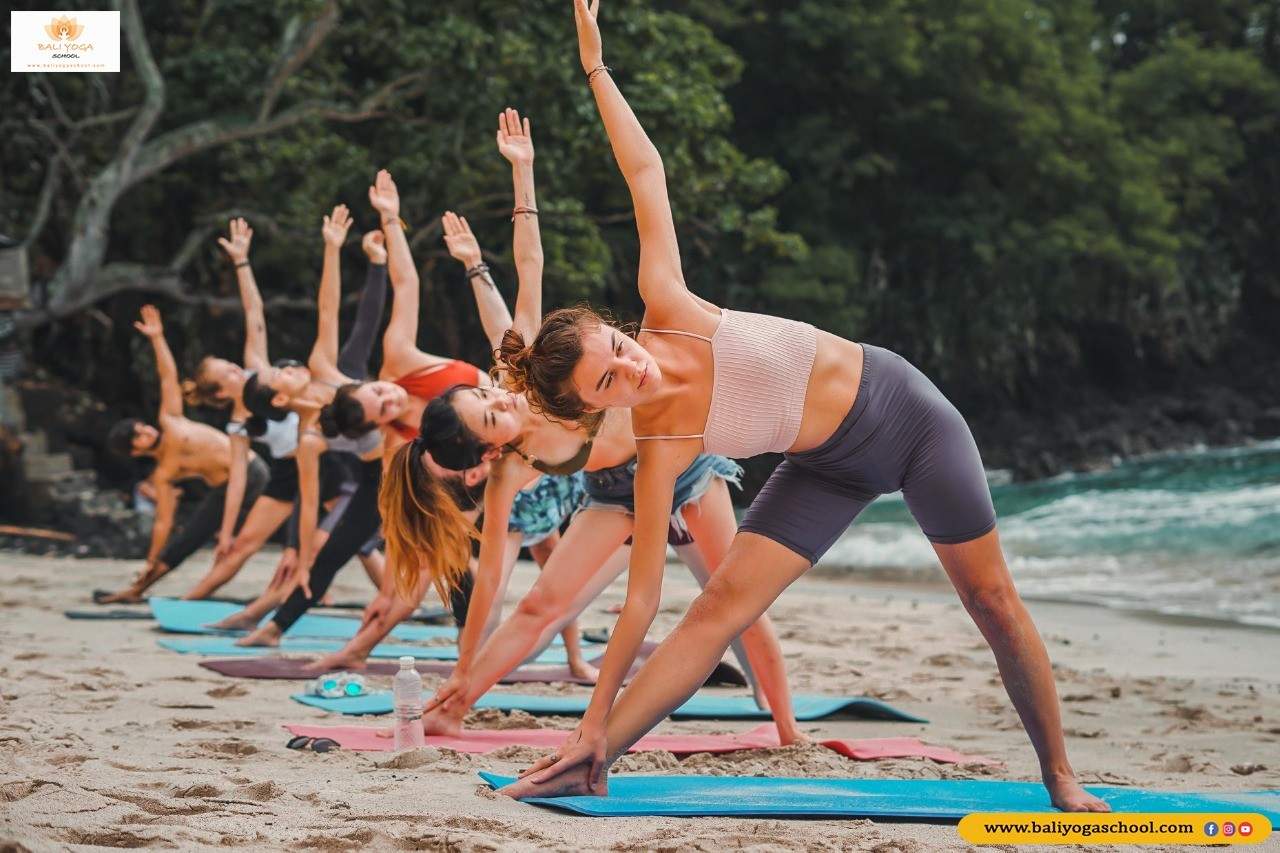
Mastering Ishtanga intermediate series postures
Ashtanga Yoga Postures
Standing Postures-
Samasthiti
Sun salutation (A & B)
Padangushtasana
Pada hastasana
Utthita Trikonasana
Parivritta Trikonasana
Utthita Parsvakonasana
Parivrtta Parsvakonasana
Prasarita Padottanasana (A, B, C & D)
Parsvottanasana
Intermediate Postures –
Pasasana
Krounchasana
Shalabhasana A, B
Bhekasana
Dhanurasana
Parsvadhanurasana
Ustrasana
Laghu Vajrasana
Kapotasana
Supta Vajrasana
Bakasana
Bharadvajasana
Ardha Matsyendrasana
Ekapada Sirsasana A, B, C
Dwipada Sirsasana B
Yoga nidrasana
Tittibhasana A, B, C
Pincha Mayurasana
Karandavasana
Mayurasana
Makarasana
Vatayanasana
Parighasana
Gomukhasana A, B, C
Supta Urdhvapada Vajrasana A, B
Mukta Hasta Sirsasana A, B, C
Baddha Hasta Sirsasana A, B, C, D
Urdhva Dhanurasana
Drop back to Urdhva Dhanurasana
Paschimottanasana
Finishing Postures-
Salamba Sarvangasana
Halasana Karnapidasana
Urdhva Padmasana
Pindasana
Matsyasana
Uttana Padasana
Shirshasana
Baddha Padmasana
Yoga Mudra Padmasana
Uth Pluthi (Tolasana)
Shavasana

Dhayan (Meditation)
What is mind and its role in meditation?
Nature of mind and why it is restless?
What is Concentration?
Difference between concentration and meditation.
Fundamental importance of meditation.
Types of meditation.
Anapana Meditation
Mahamrityunjaya Mantra Meditation
Gayatri mantra Meditation
Om mani padme hum Mantra Meditation
Yoga Nidra Meditation
Vipassana meditation
Sound Healing therapy for chakras
Introduction to 7 Chakras, Aura and Prana
Mantra for Muladhara Chakra Meditation
Mantra for Swadhisthana Chakra Meditation
Mantra for Manipura Chakra Meditation
Mantra for Anahata Chakra Meditation
Mantra for Vishuddhi Chakra Meditation
Dynamic Moving Meditation (Osho)
Kirtan Spiritual Dancing Meditation
Walking Meditation
Self-Surrender Meditation
Jyoti Tratak meditation
What is samadhi & It’s process

Yoga Therapy & Ayurveda – 1st, 2nd, 3rd weeks
Concept and fundamentals of Ayurveda
Meaning, definition and principles of Ayurveda.
Tridosha meaning and functions.
Agni types and functions.
Ama meaning and types.
Trimalas types and relation with tridosha.
Triguna importance and attributes.
Fundamental Relation of triguna with Tridosha.
Saptprakarti attributes, qualities.
General functions of saptprakarti and their characteristics.
Mithahara definition and meaning
Fundamentals and importance of satavic diet.
Categories of food and its explanation.
Diet according to position of sun.
Saptprakarti and Tridosha diet.
Therapy and dietary needs for arthritis.
Therapeutic use of Asanas for Disc herniation.
Therapeutic use of Asanas for back problems.
Osteoporosis treatment and therapy.
Asthma’s problematic area and cure.
Sinusitis therapeutic cure.
Irritable bowel syndrome therapy.
Therapy for constipation problems.
Therapeutic use of meditation for Depression.
Therapeutic use of pranayama for Anxiety Disorders
Therapeutic use of shatkarmas for Migraine.
Therapeutic use of pranayama for Amnesia disorder.
4th week
Submission of assignments
Revision
Practical exam :presentation on one topic

Pranayama (Breathing Practices)
Four Weeks of Pranayama
Week 1: Advanced pranayama practices
Week 2: Variations and experiments
Week 3: Awakening nadis and chakras
Week 4: Teaching practices and mastery of breathing
Topics:
What is Pranayama?
How pranayama brought happiness
Physiology of prana
Elements in nature of prana
Prana body types
Astrology of Breathing science
Prana and it routes
How prana flows in the body
Prana & Consciousness
Number of breaths we take
Research on prana
Health parameter with breath length
Guideline and discipline of pranayama
(Intermediate and Advance Practices of Pranayama)
Clavicular Pranayama (Upper Chest Pranayama)
Thoracic Pranayama (Middle Chest Pranayama)
Koshtiya (Diaphragmatic Pranayama)
Full body Yogic Pranayama
Pranava Pranayama (Om Meditation Breathing)
Nadi Shodhana Pranayama or Anulom Vilom Pranayama
Bhastrika Pranayama (Bellows Breath)
Kapalbhati Pranayama (Skull Shining Breath)
Bhramari Pranayama (Humming Bee Breath)
Ujjayi Pranayama (Ocean Breath)
Sitali Pranayama (Cooling Breath)
Sitkari Pranayama (Hissing Breath)
Murcha Pranayama (Swooning Breath Yoga)
Surya Bhedi Pranayama (Right Nostril Breathing)
Chandra Bhedi Pranayama (Left Nostril Breathing)

Yoga philosophy
Week 1 – Chapter 1st (Yoga Samadhi)
What is Yoga & Samadhi
How can we be in present moment in order to achieve Samadhi
Yoga discipline Different states of mind
How to control the mind
Why Samadhi
Controlling right knowledge, wrong knowledge, imagination, sleep & memory
The benefit of practice & non attachment
How to mastery self-practice
Two kinds of Samadhi
What is God and why His name is Om
Obstacles of Yoga
Experience of highest Samadhi
Week 2: Chapter 2nd (Yoga Sadhana)
How to do Tapasya (Intense practice of Yoga)
How to do Swadhyaya (Self-Analyasis, self-discovery)
How to do Self-surrender/surrender to Divine
Kriya Yoga – Why What is ignorance and emotional attachment
What is pleasure & pain (sukha & dukha)
How pain lives with you and how it generates and vanishes
Clear perception, right action, stability, control of sense organ and experience of self is the source of liberation
How to achieve total withdrawal and separation of mundane psychology
Viveka kyati – insight discrimination
Eight limbs of yoga
Week 3: Chapter 3rd (Yoga Vibhuti)
What is concentration?
What is meditation?
What is Samadhi?
External and internal yoga
How Yogi’s receive the knowledge of the entire cosmos
How cessation of hunger and thrust is achieved
How to acquire complete stillness
How can you see celestial beings
How can one have knowledge of mind
Siddhis are helpful or hindrance for Sadhana
How can a Yogi walk on thorns and water
How can we achieve the divine sense of hearing
Week 4: Yoga Kaivalya
How Siddhi generates
How to achieve Kaivalya(liberation)

Alignmement & Adjustment
Standing Postures-
Samasthiti
Sun salutation (A & B)
Padangushtasana
Pada hastasana
Utthita Trikonasana
Parivritta Trikonasana
Utthita Parsvakonasana
Parivrtta Parsvakonasana
Prasarita Padottanasana (A, B, C & D)
Parsvottanasana
Intermediate Postures –
Pasasana
Krounchasana
Shalabhasana A, B
Bhekasana
Dhanurasana
Parsvadhanurasana
Ustrasana
Laghu Vajrasana
Kapotasana
Supta Vajrasana
Bakasana
Bharadvajasana
Ardha Matsyendrasana
Ekapada Sirsasana A, B, C
Dwipada Sirsasana B
Yoga nidrasana
Tittibhasana A, B, C
Pincha Mayurasana
Karandavasana
Mayurasana
Makarasana
Vatayanasana
Parighasana
Gomukhasana A, B, C
Supta Urdhvapada Vajrasana A, B
Mukta Hasta Sirsasana A, B, C
Baddha Hasta Sirsasana A, B, C, D
Urdhva Dhanurasana
Drop back to Urdhva Dhanurasana
Paschimottanasana
Finishing Postures-
Salamba Sarvangasana
Halasana Karnapidasana
Urdhva Padmasana
Pindasana
Matsyasana
Uttana Padasana
Shirshasana
Baddha Padmasana
Yoga Mudra Padmasana
Uth Pluthi (Tolasana)
Shavasana
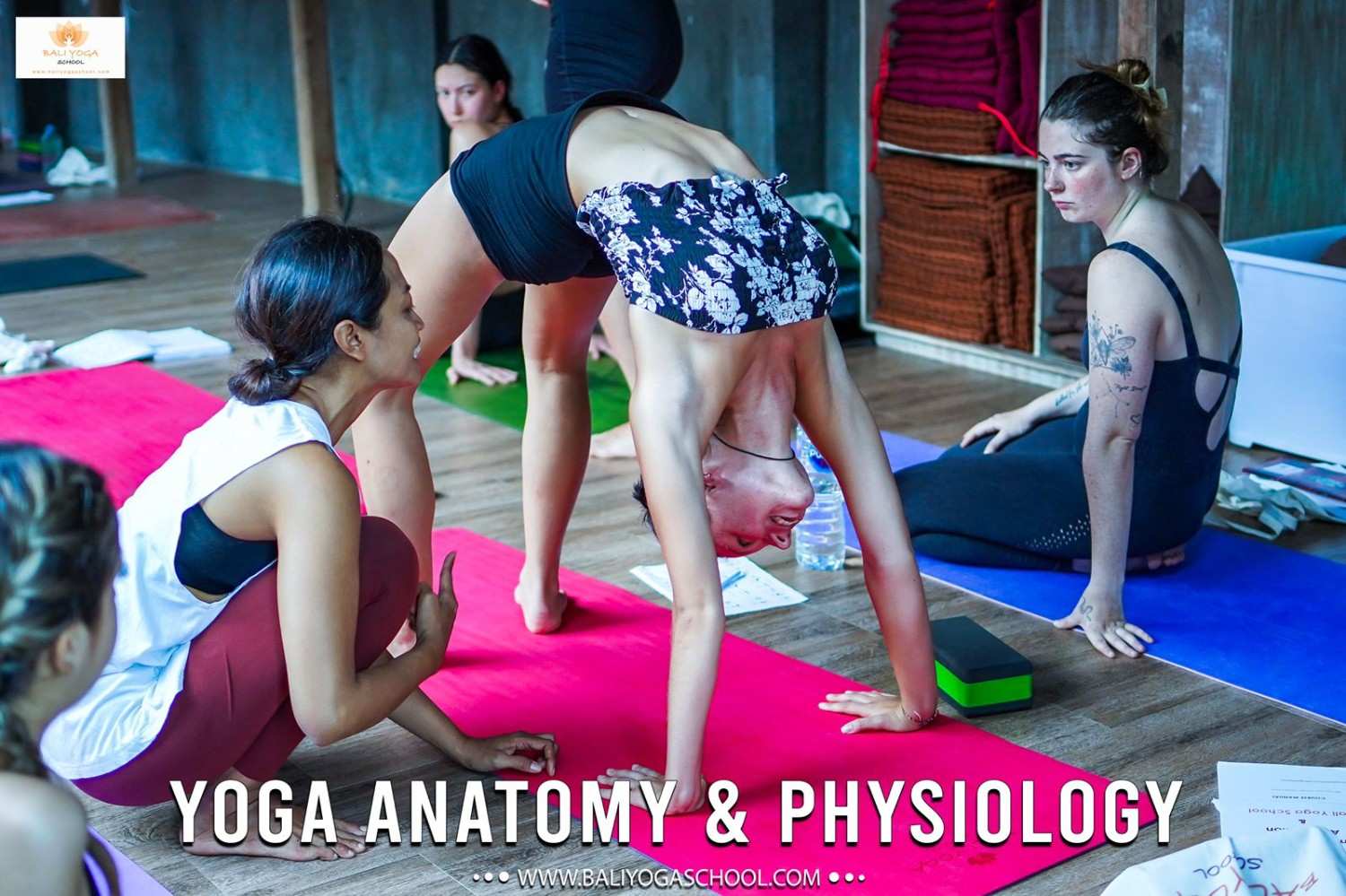
Yoga Anatomy & Physiology
1st Week
Brief introduction of skeleton system & function
Anatomy of shoulder & function with the important name of muscles
Anatomy of pelvic griddle with muscles names
Spine anatomy & function/ importance in yoga practice
Kundalini shakti introduction & function
Chakra introduction & function with the endocrine system
Nadis- the energy channel function & importance
Prana introduction & importance in organ function
Panchakosha importance in function of the body
2nd week
Chakra introduction & function with endocrine system
Nadis- the energy channel function & importance
prana introduction & importance in organ function
Panchakosha importance in function of body
3rd week
Respiratory system introduction/ function and problems
Circulatory system importance/ function & problems
Digestive system importance/ function & problems
Submission of assignment & revision
4th week
Practical exam : Presentation given to teacher
Written exam: Submission of assignment to teacher

Shatkarma (Yoga Cleansing)
Introduction to shatkarma
Jalaneti Satkarma (Nasal cleansing with salty water)
Rubber neti (Nasal cleansing with a rubber string)
Kunjal kriya
Shankh prakshalan kriya
Bandhas (Energy Locks)
Mula Bandha (Root Lock)
Uddiyana Bandha (Abdominal Lock)
Jalandhara Bandha (Throat Lock)
Mahabandha ( great lock )
Mudras
Chin Mudra
Jnana Mudra
Vishnu Mudra
Nasagra Mudra
Shambhavi Mudra
Ashwini Mudra
Shanmukhi Mudra
Viparita Karani

Teaching Practice
Demonstration & Teaching methodology
Alignment
Instructions
Evaluation are based on
Written Test
Asana Practical Test
Attendance
Performance
Behaviour
Yoga Teacher Training + Sound / Reiki Healing Course
Complete our sound healing courses during your YTT! We arrange our Sound / Reiki Healing Courses during your break time so you can complete it by utilising the time and with just a little extra costs. You will cover 2 hours a day and it lasts for 2 days (for level 1), 4 days (for level 1&2), and 7 days (for level 1&2&3).
Add +skills to your Yoga Teacher Training journey.

Yoga Teacher Training Dates and Fees
-
4th Jan to 28th Feb / 2025
Closed
-
1st Feb to 28th Mar / 2025
Closed
-
1st Mar to 28th Apr / 2025
Closed
-
1st Apr to 28th May / 2025
Closed
-
1st May to 28th Jun / 2025
Closed
-
1st Jun to 28th Jul / 2025
Available
-
1st Jul to 28th Aug / 2025
Available
-
1st Aug to 28th Sep / 2025
Available
-
1st Sep to 28th Oct / 2025
Available
-
1st Oct to 28th Nov / 2025
Available
-
1st Nov to 28th Dec / 2025
Available
-
1st Dec / 2025 to 28th Jan / 2026
Available
Course Duration : 58 Days
Course Fee :
Twin Shared Room in Campus-I (All Inclusive) – $5600 USD $4200 USD (25% off)
Private Room in Campus-I (All Inclusive) – $6935 USD $5200 USD (25% off)
Private Room in Campus-II (All Inclusive) [New Campus] – $6000 USD $4500 USD (25% off)
2 People Shared Room (Only Room, No Meals) – USD 4250 USD 3187
Private Room (Only Room, No Meals) – USD 5050 USD 3787
Course with Meals (No Room) – USD 4250 USD 3187
Course with No Rooms, No Meals – USD 3000 USD 2250
Additional Sound Healing Courses
Level. 1 (4 hours)
USD $150 $127
Level. 1&2 (8 hours)
USD $300 $255
Level. 1&2&3 (14 hours)
USD $525 $446
Additional Reiki Healing Courses
Level. 1 (4 hours)
USD $150 $127
Level. 1&2 (8 hours)
USD $300 $255
Level. 1&2&3 (14 hours)
USD $525 $446
In order for you to rest properly before the opening ceremony on the 1st day of the course, the check-in to the school should be one-day before the course begins. Your check in time must be between 10 AM to 4 PM. We provide you a complementary stay for that night. Your check out on the last day of the course must be between 12 PM to 2 PM.
Shared Room
Private Room
500 Hour Yoga Teacher Training Daily Schedule - 1st Month
| Time | Schedule |
|---|---|
| 5:30 am | Morning Bell |
| 6:00 – 7:00 am | Shatkarma & Pranayama |
| 7:00 – 8:30 am | Hatha Vinyasa Yoga |
| 08:30 am | Breakfast |
| 09:30 – 10:30 am | Alignment/ Adjustment/ Teaching Methodology |
| 10:30 – 11:30 am | Anatomy |
| 11:30 – 12:30 pm | Yoga Philosophy |
| 12:30 pm | Lunch |
| 13:30 – 15:30 pm | Sound Healing Class (only applicable for YTT + Sound Healing Course participants) |
| 16:40 – 18:10 pm | Ashtanga Vinyasa Yoga |
| 18:10 pm | Tea Break |
| 18:30 – 19:30 pm | Meditation |
| 19:30 pm | Dinner |
| 21:30 pm | Lights Off |
500 Hour Yoga Teacher Training Daily Schedule - 2nd Month
| Time | Schedule |
|---|---|
| 5:30 am | Morning Bell |
| 6:00 – 7:00 am | Shatkarma & Pranayama |
| 7:00 – 8:30 am | Hatha Vinyasa Yoga |
| 08:30 am | Breakfast |
| 09:30 – 10:30 am | Anatomy |
| 10:30 – 11:30 am | Yoga Philosophy |
| 11:30 – 12:30 pm | Yoga Therapy / Ayurveda |
| 12:30 pm | Lunch |
| 13:30 – 15:30 pm | Sound Healing Class (only applicable for YTT + Sound Healing Course participants) |
| 15:40 – 16:40 pm | Alignment/ Adjustment/ Teaching Methodology |
| 16:40 – 18:10 pm | Ashtanga Vinyasa Yoga |
| 18:10 pm | Tea Break |
| 18:30 – 19:30 pm | Meditation |
| 19:30 pm | Dinner |
| 21:30 pm | Lights Off |
Contact Us
How to Reach?
Arrival & Departure Dates:
The course starts on 1st of every month at 5:00 pm with the opening ceremony & orientation program, The course completes on 27th of next month at 5:00 pm with graduation & fire ceremony performed by the graduates & their masters. In order for you to rest properly before the opening ceremony on the 1st day of the course, the check-in to the school should be one-day before the course begins. Your check in time must be between 10 AM to 4 PM. We provide you a complementary stay for that night. Your check out on the last day of the course must be between 12 PM to 2 PM.
What is the best way to arrive at Bali Yoga School ?
The best and most convenient way to travel for Bali is to take a flight to Ngurah Rai International Airport Denpasar Bali . Denpasar Bali airport is merely 38 kms from school.As soon as you book your flight, forward us your flight details and we will send our driver to receive you from Denpasar Bali airport.
Note : Complementary pick-up service from the DPS (I Gusti Ngurah Rai International Airport) is included in the course fee. Please provide your flight information once you book it, and we will arrange a pick-up for you.
What is included in Yoga Course Fee?
What is not included in Yoga Course Fee?
Sample Certificate for 500 Hour Yoga Teacher Training in Bali
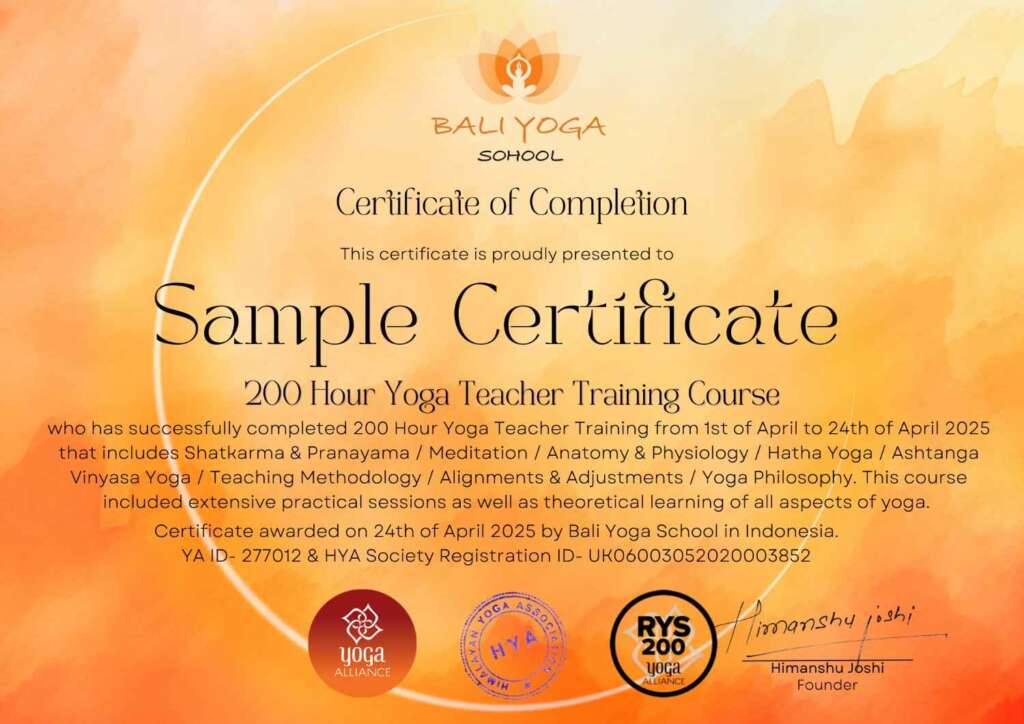
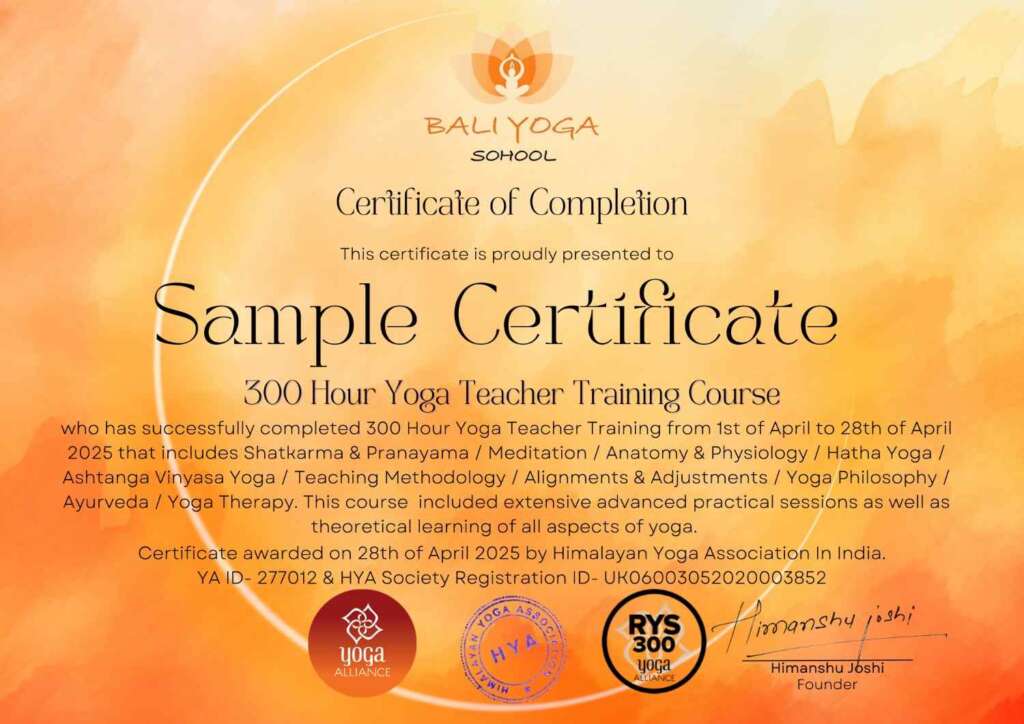
How to prepare yourself for the course?
Do you dream of becoming a successful yoga teacher? Do you look forward to a quality yoga teacher training from a recognized yoga institution? Then a professional yoga teacher training in bali is right for you! Not only does it equip you with the necessary skills and know-how to teach yoga, but also prepares you mentally, physically and spiritually to be able to embark upon a wonderful yogic journey and venture ahead. So if you are wondering how to add a great start to your plans, then here it is important to keep in mind that your preparations prior to joining a yoga school, count! Read on to find out more on how to prepare yourself for your upcoming 500 hour yoga teacher training course in bali.
To set your stepping stone to success in the field of teaching yoga, here are some key factors to keep in mind:
Read some quality yoga literature
Investing in some books updates your know-how on the history of yoga, its philosophy and so on. This will acquaint you to the subject and the evolution of yoga over time.
Physical and mental preparation
The daily regimen to be followed during a yoga teacher training in bali program, could start as early as 5.30 to 6 a.m and end by 8 to 10 p.m. The entire day keeps you busy with arduous yoga sessions under the guidance of the yoga expert teachers with theory classes to add to it and other such activities. So joining a fitness routine, adopting healthy eating habits and reading blogs on yoga training experiences helps one to be mentally prepared prior to the commencement of the program.
Researching yoga schools in bali
Though you will find plenty of yoga school in bali they may however differ in terms of the style of yoga, the teachers, reviews and ratings, fees and so on. These are some of the crucial factors to check while doing your research and more importantly if the yoga school chosen by you is recognized by the Yoga Alliance or not. So make sure you enroll for a Yoga Alliance certified 500 hour yoga teacher training school in bali that will make you eligible to teach anywhere in the world.
The RYT500 yoga teacher training certification happens to be the most popular certification course in yoga teaching demanded by aspiring yoga teachers and practitioners, intended to provide you a month long intensive foundation on the concepts of learning yoga and the art of teaching the same .
Practicing daily and on a serious note
Before joining our best 500 hour yoga teacher training in bali, practicing frequently and seriously will allow you to achieve a better insight into your strengths and weaknesses. This will help you understand the areas that need more focus from your end and the kind of queries that you may have to ask your teachers during the course sessions.
So make the most of 500-hour your yoga teacher training program without having to lose on your precious sleep over it! Stay positive to be able to look forward to the course with much interest and enthusiasm.
Yogic food to suit yogic lifestyle

Each time you work on a yoga pose or practice pranayama, you intensify your capacity to exercise control over your focus, breath and body. Likewise, as you delve deeper into the yogic philosophy, you will find yourself eating, sleeping and thinking like a yogi! And when it comes to eating, diet certainly plays a significant role.
It is a known fact, that food is an important element and life-giving energy to the human body. The quality and type of food impact our physical and mental well-being. When nutrition is talked of from a yogic perspective, it includes much more than just the nutritional content of the food. As a full-fledged yogic practice demands the proper supplementation of the body with nutrients, the energetic aspect of nutrition is also to be taken into consideration while determining your choice of diet.
Meat or no meat?- The dilemma
Many yogis are faced with this question. As heard from many, practitioners feel that after long hours of practice, there comes a point when they do not really feel right or ready to consume non-vegetarian food anymore!
So what is the correct yogic diet (Sattvic Diet)?
Have you ever observed the impact that your food intake has been having upon your practice of yoga? It has been evident that some foods might wreck internal turmoil in the form of bloating or other such digestion disorders. On the other hand, there are some foods that are said to be more subtle and suitable to the body and mind.
The concept of Ayurveda, the sister science of yoga, enlightens us on the impact of different foods on our overall physical, spiritual and mental well-being. As per Ayurveda, “Sattva” denotes purity in quality of the self-control and spiritual well-being as apparent in the form of intelligence, virtue, awareness and happiness. Thus foods that are sattvic, promote purity in terms of both mind and body. They help nurture the mind – one that is clear, filled with compassion and keeps calm.
Following Sattvic diet
The good news for yogis is that Sattvic foods are absolutely vegetarian! Thus no animals are harmed in the making of such foods as they do not contain any animal products. These foods should be naturally cultivated and should not include any harmful preservatives, additive substances or artificial flavors.
What does a Sattvic diet or Food consist of?
A sattvic diet generally includes:
- Fresh, organically grown fruits and vegetables
- Nuts and whole grains
- Dairy – based foods example ghee (clarified butter ) and milk
- Lentils
- Beans
- Oils that are plant-based
- Foods with mild sweetness containing natural and unrefined sugars
- Spices such as turmeric, ginger, coriander, basil and cinnamon
How is Sattvic diet beneficial?
A sattvic diet aids in sharpening your intellect. According to the Bhagavad-Gita, the sattvic diet is said to be light and easy–to–digest. Being enriched with prana or purity, it fosters positive thoughts and satisfaction of the mind. Following such a diet can keep you alert, refreshed and peaceful.
Read Terms & Conditions Before Joining 500hrs YTT
All classes are mandatory only in case of an emergency or illness one can take leave with respected teacher permission. Uninformed leaves won’t be accepted and this will leave bad impression on student monthly performance.
Prerequisites – A high degree of self-motivation is required for all aspects of the course. The practice and especially the teaching of yoga demand a high degree of self-discipline and purity. To ensure the success of the program, participants are required to attend all spiritual activities, meditation sessions, lectures and asana classes. Meat, fish, eggs, black tea, coffee, alcohol, tobacco, drugs and nudity are prohibited during the course as they are counterproductive to the yoga practice. Participants who do not comply with the school rules may be dismissed from the course.
Discipline Rules for Students – Smoking and alcohol are strictly prohibited in the school. If you are having a fast any day, you have to inform kitchen manager for avoiding food waste. Always make discipline, respect teachers and follow all rules. Always be in the time, you are late means will not be permitted to join class. Clear your books of account before departure from Himalayan Yoga Association. Before departure return your books, maps or any goods which you borrowed. Himalayan Yoga Association provides accommodation for a student who join the yoga course. So any friends or relatives will not be included in accommodation however they can stay in school by renting another room. Student have to be present in all scheduled program of Himalayan Yoga Association.
Refund Policy – Advance Booking deposit is non refundable, we accept date rescheduling If you cancel the course after joining, we accept the cancellation but the course fees will not be refunded with the cancellation.
